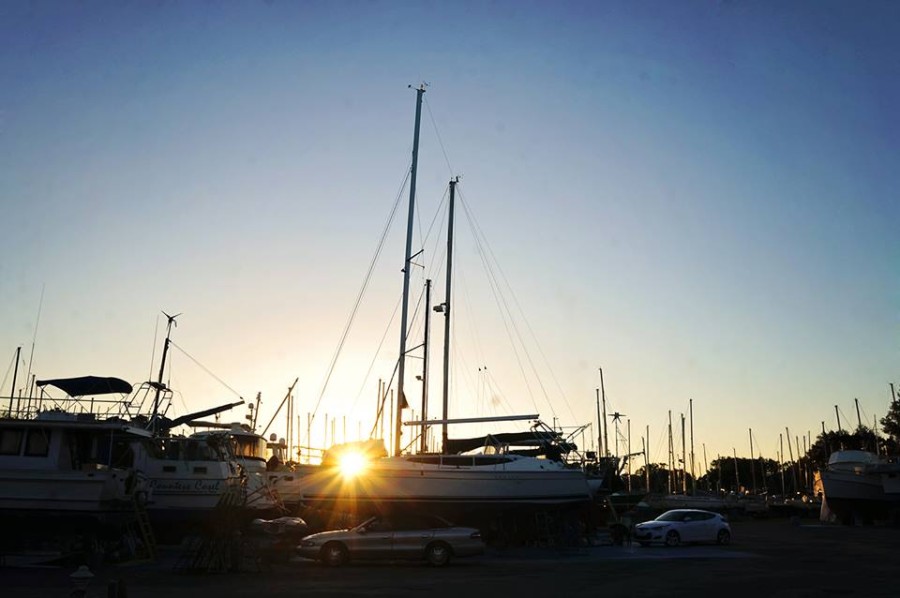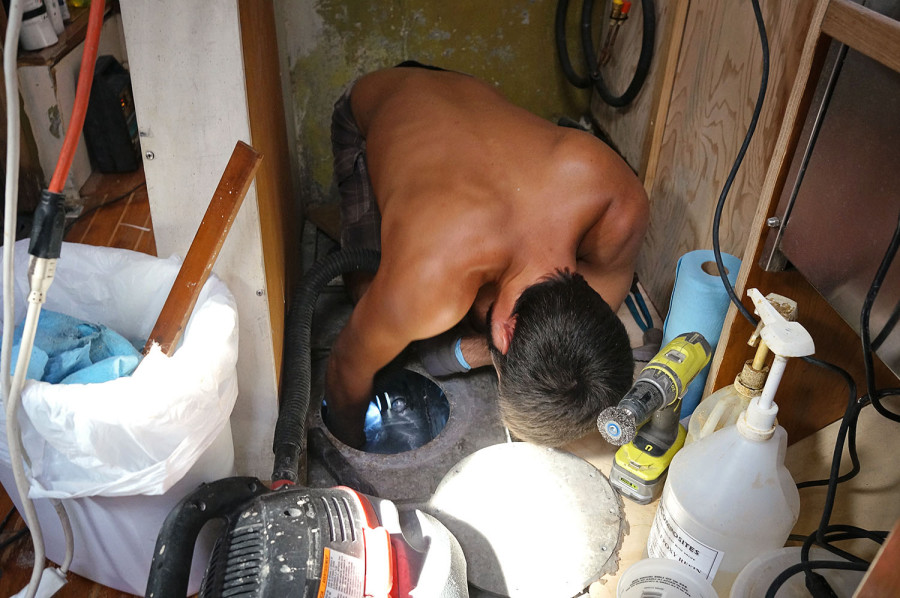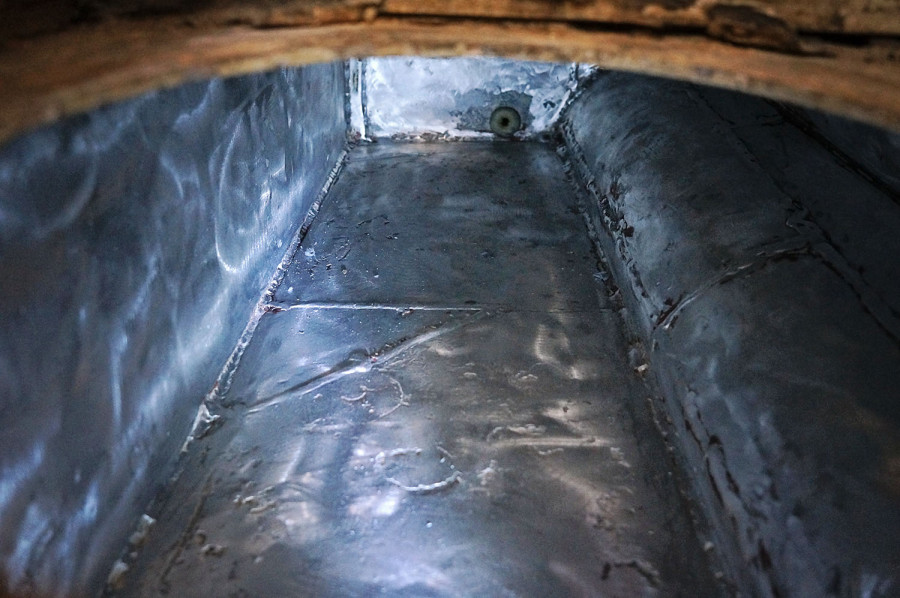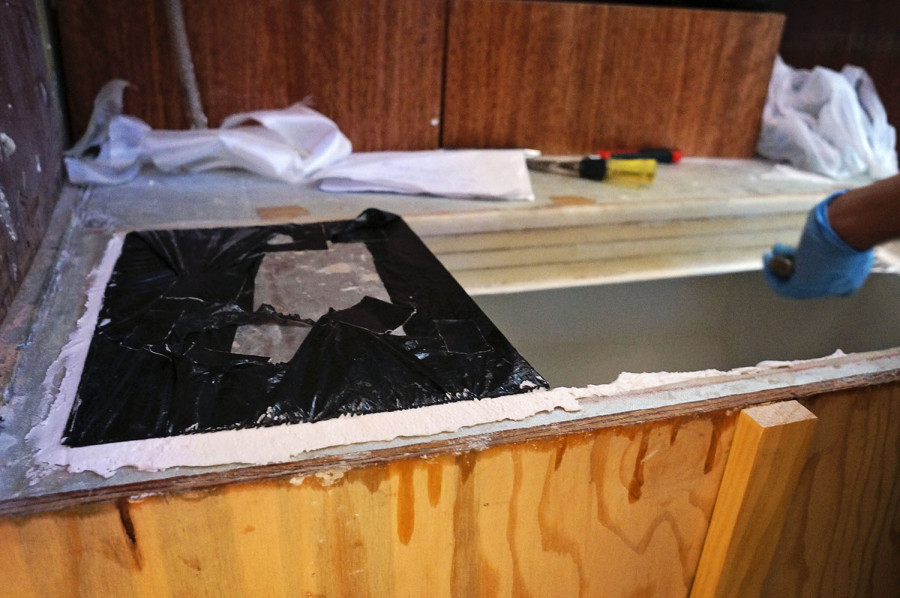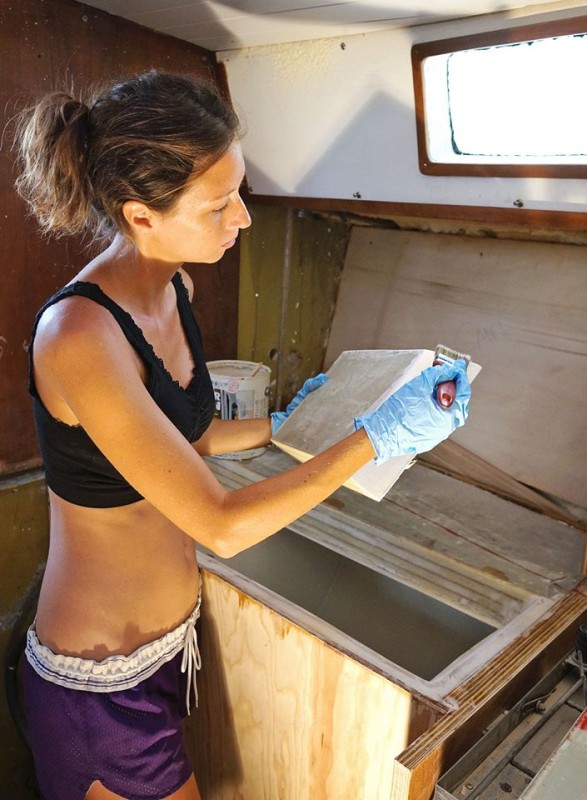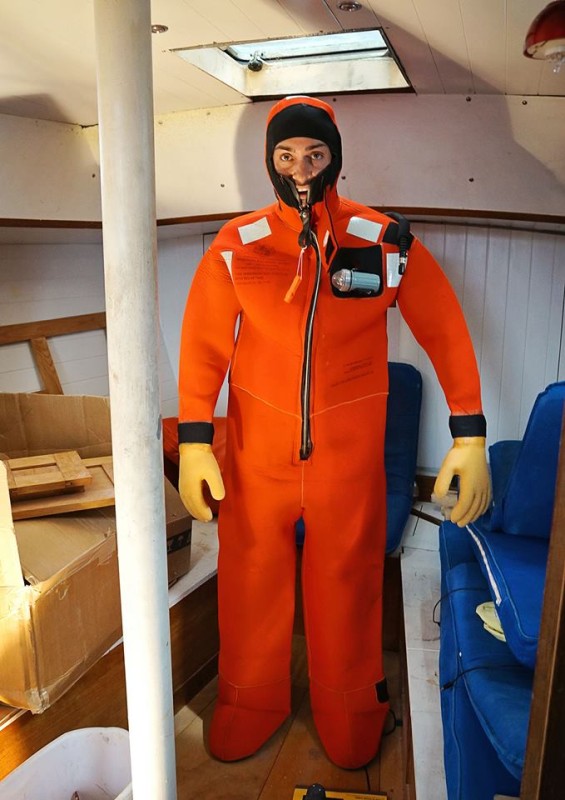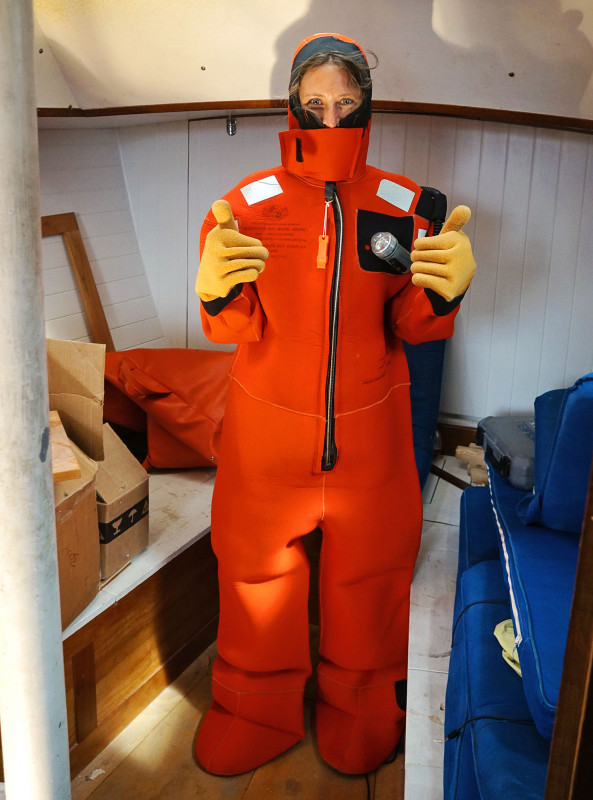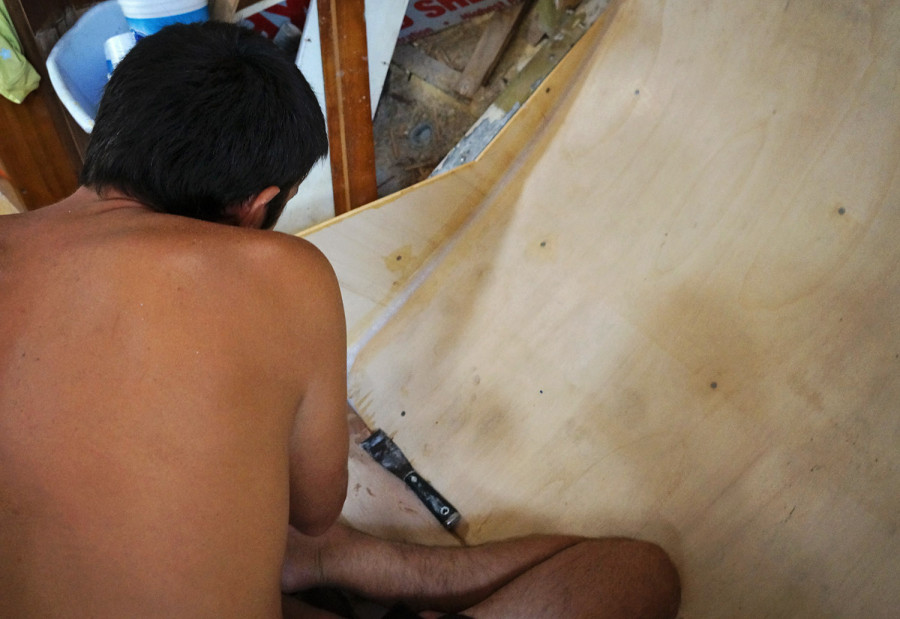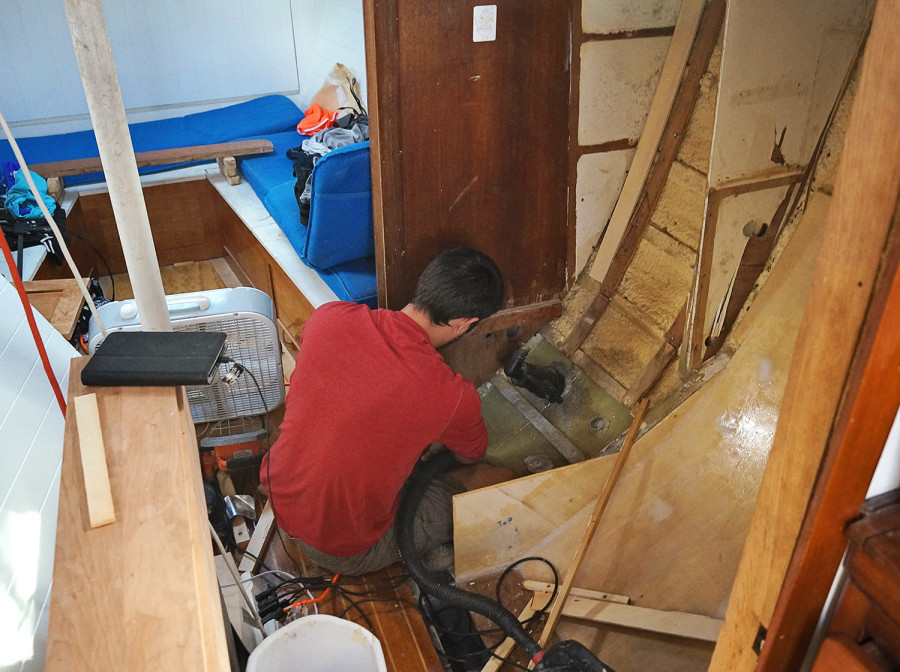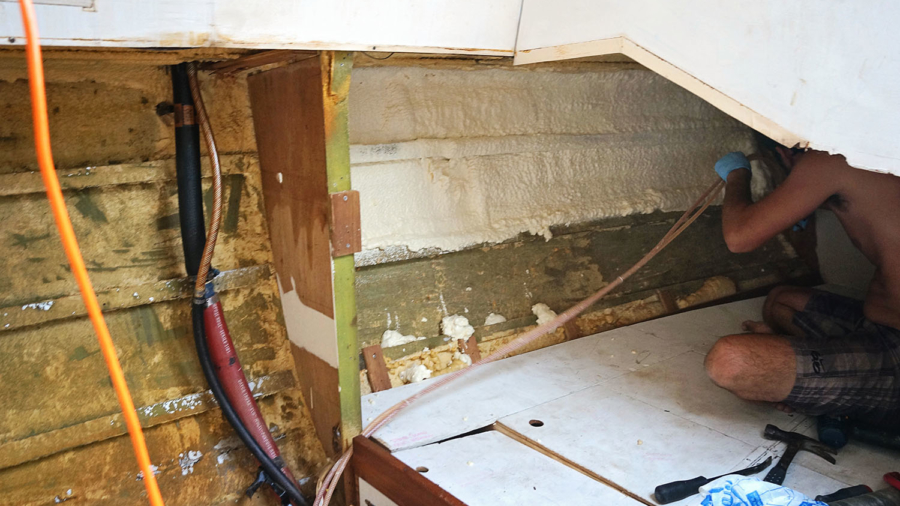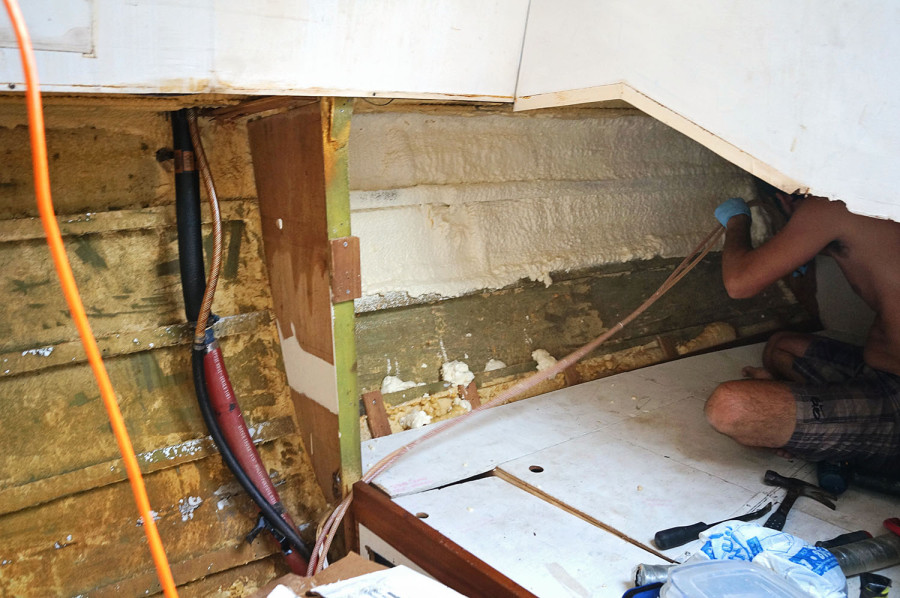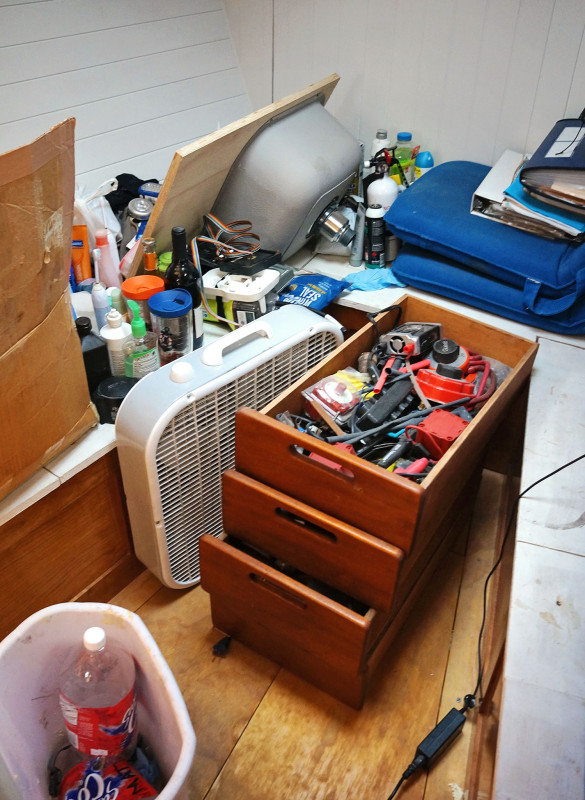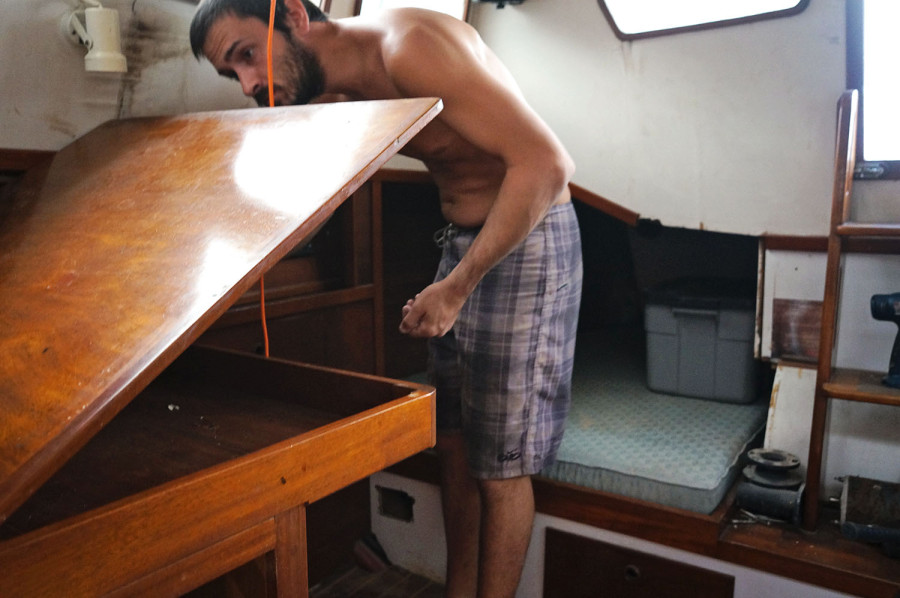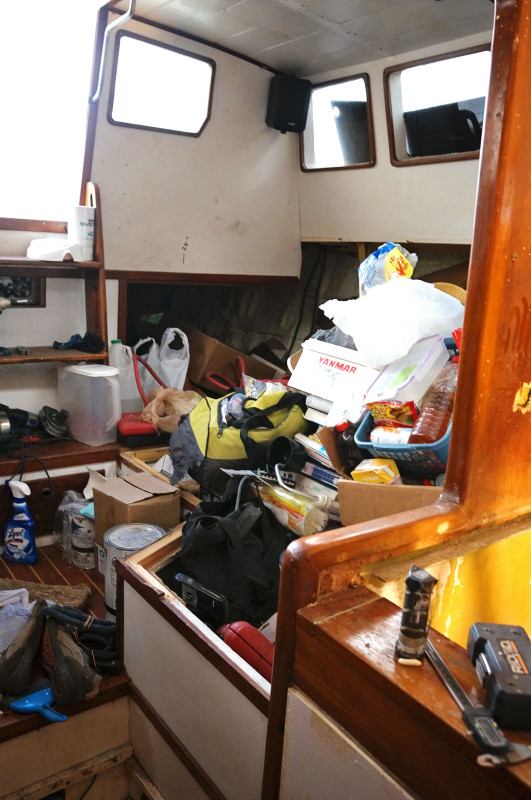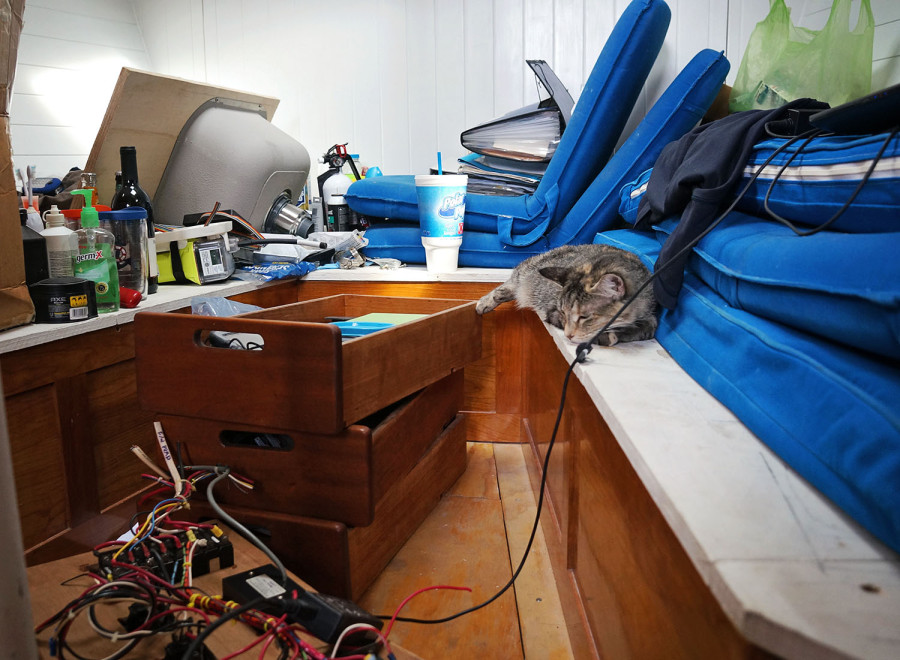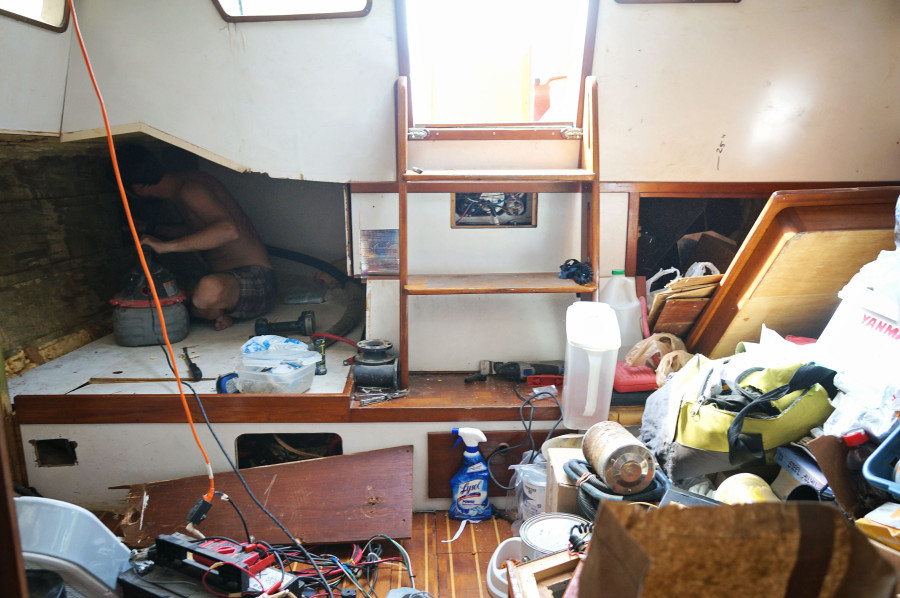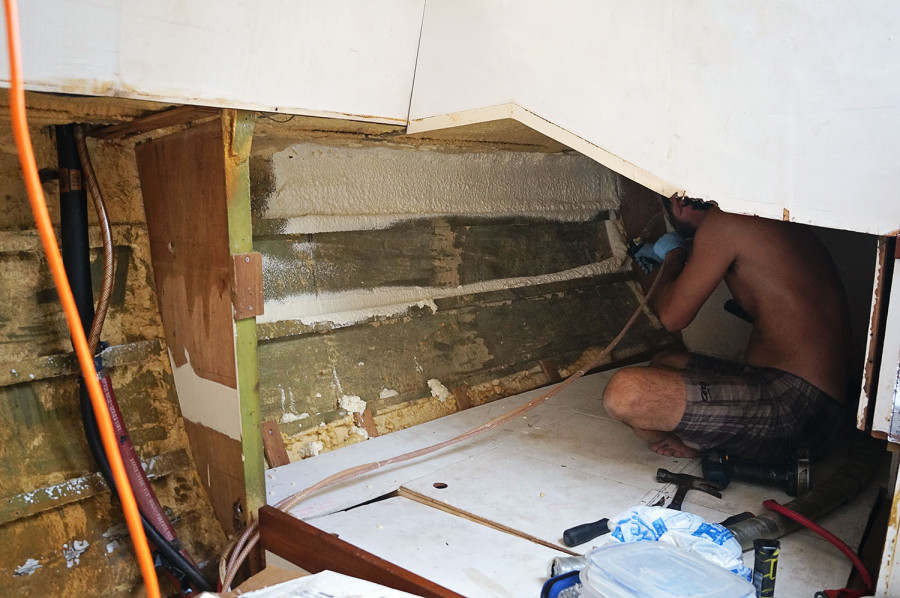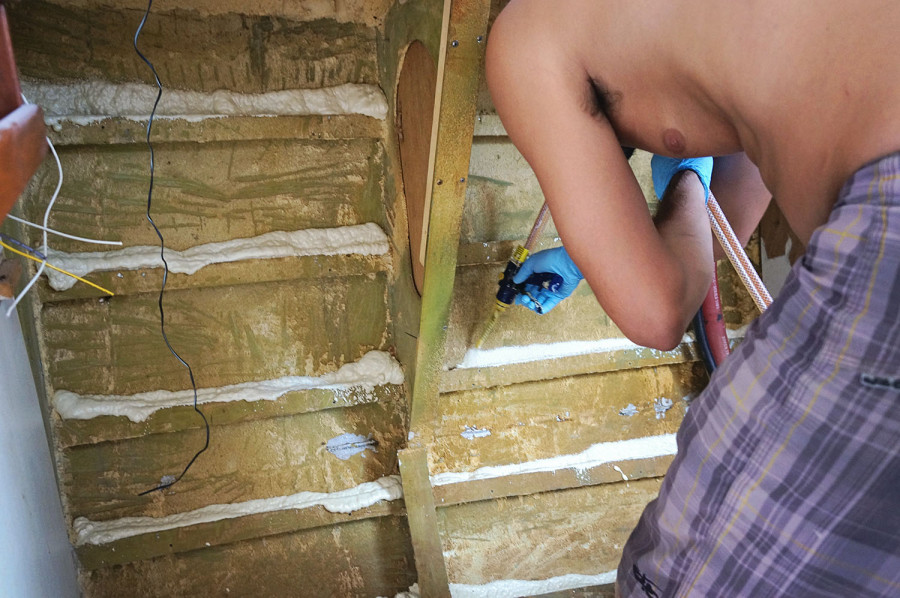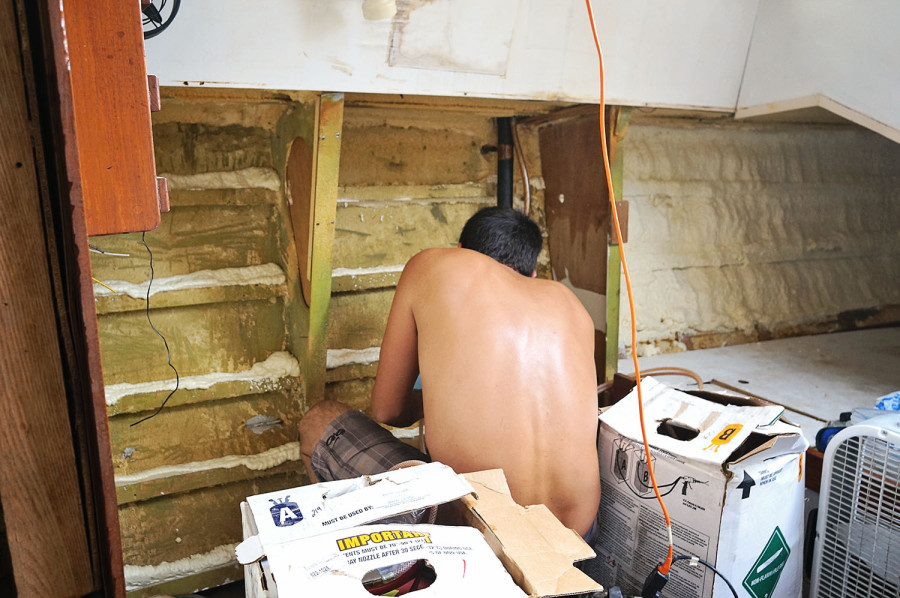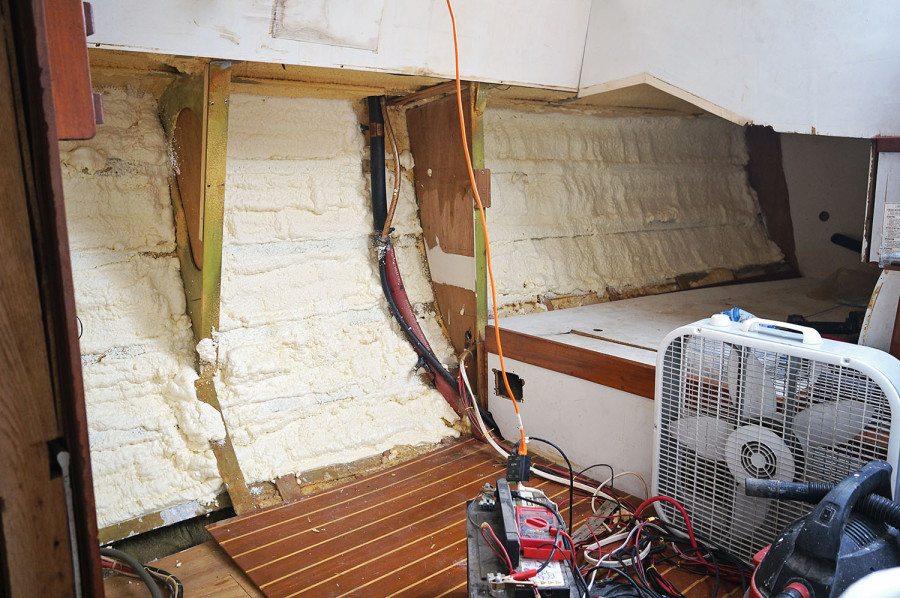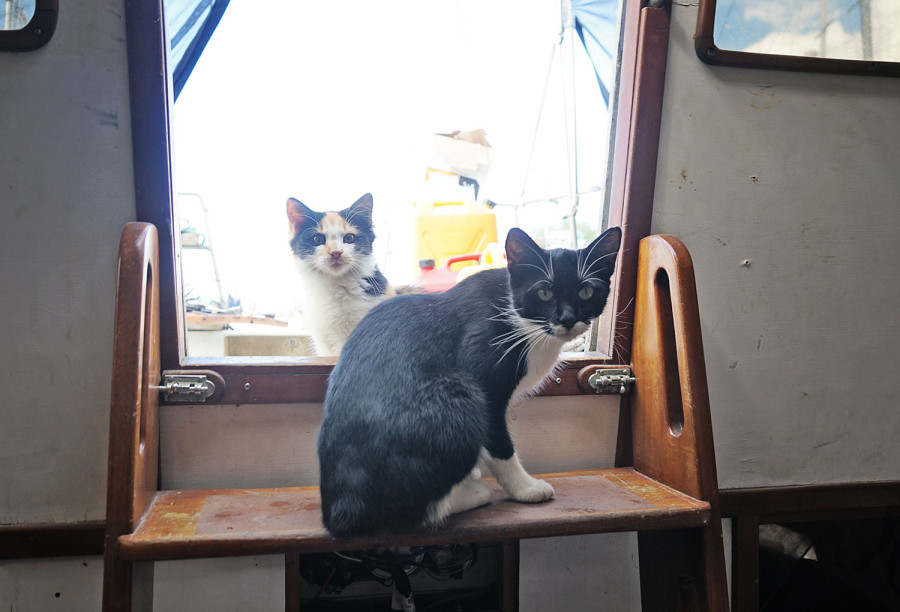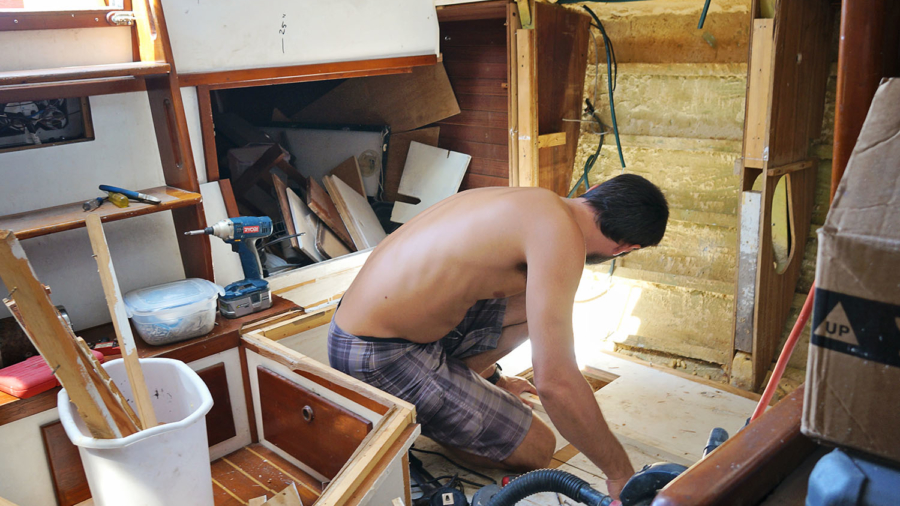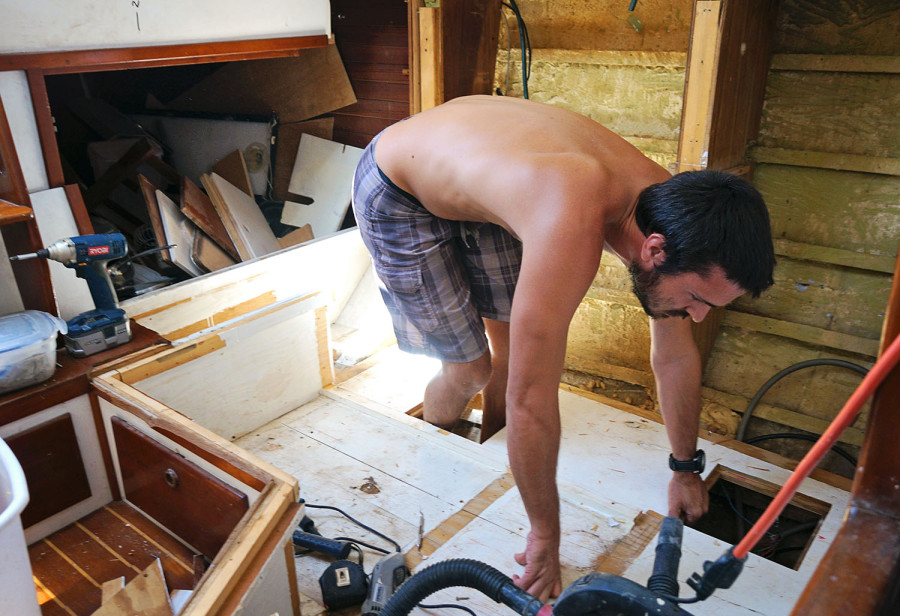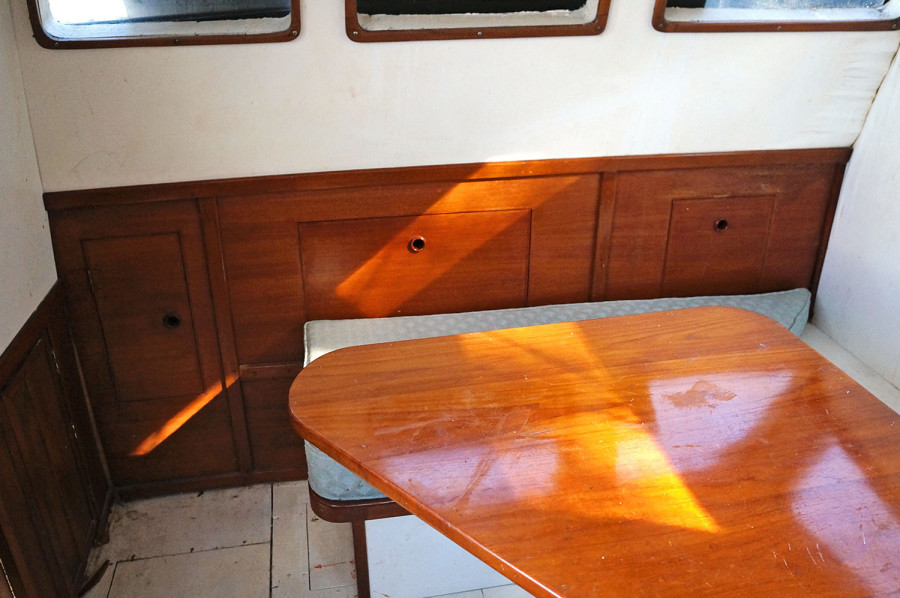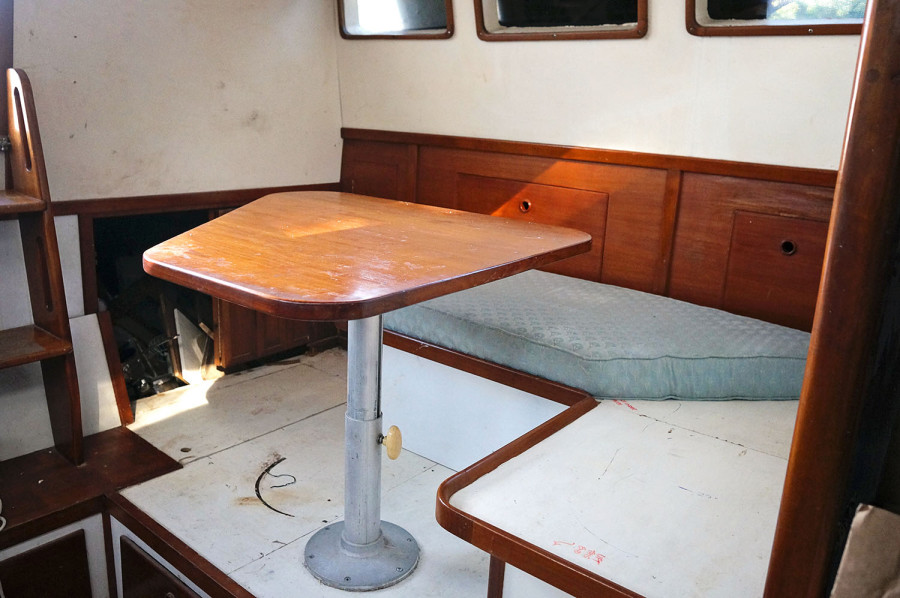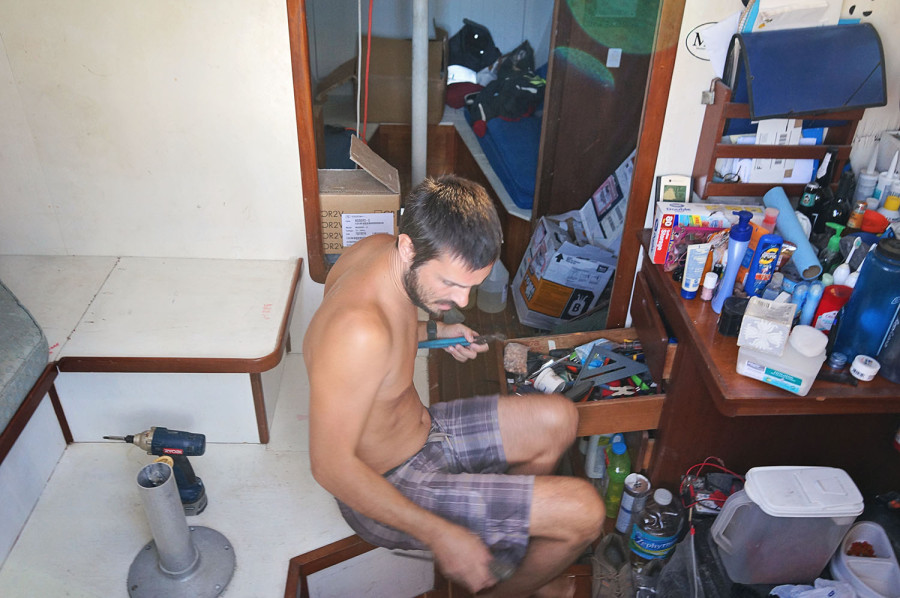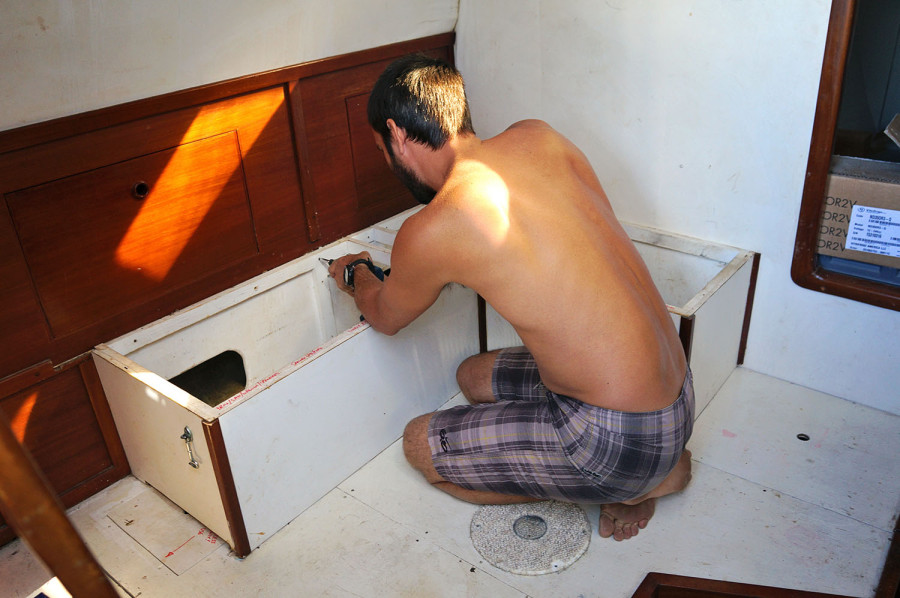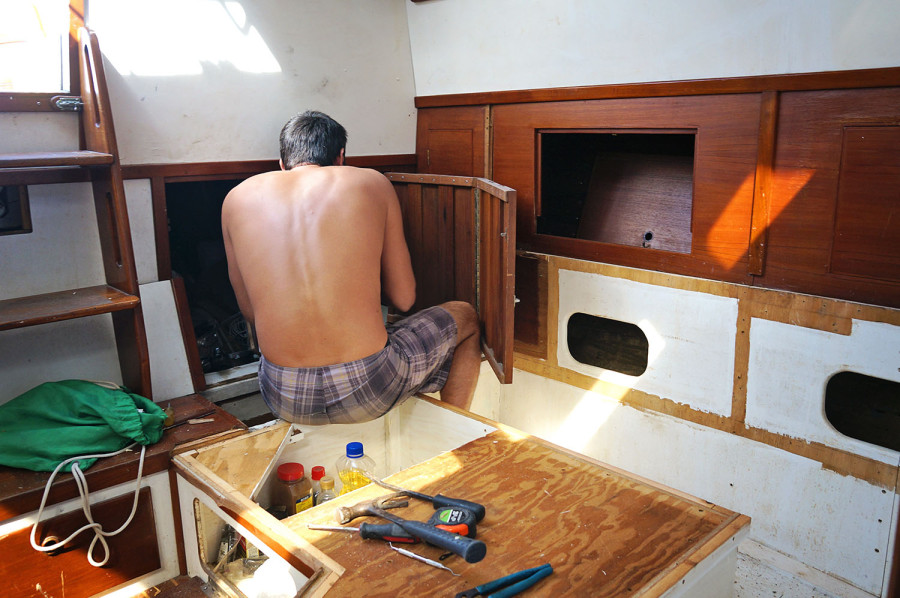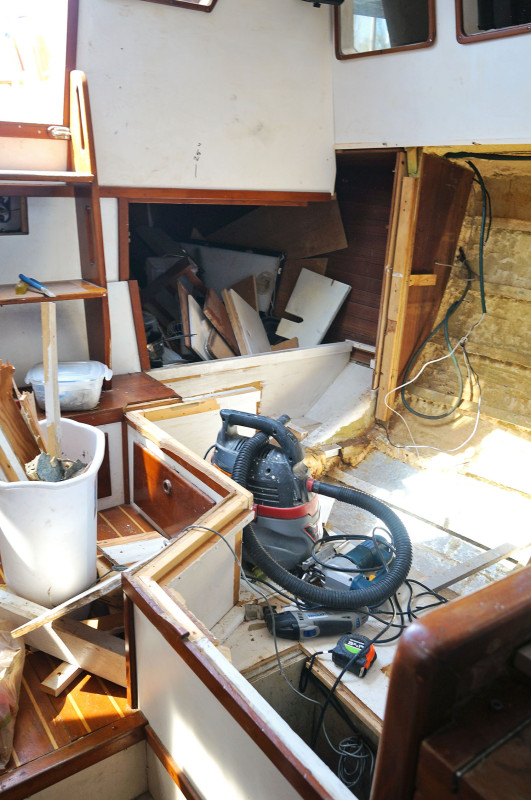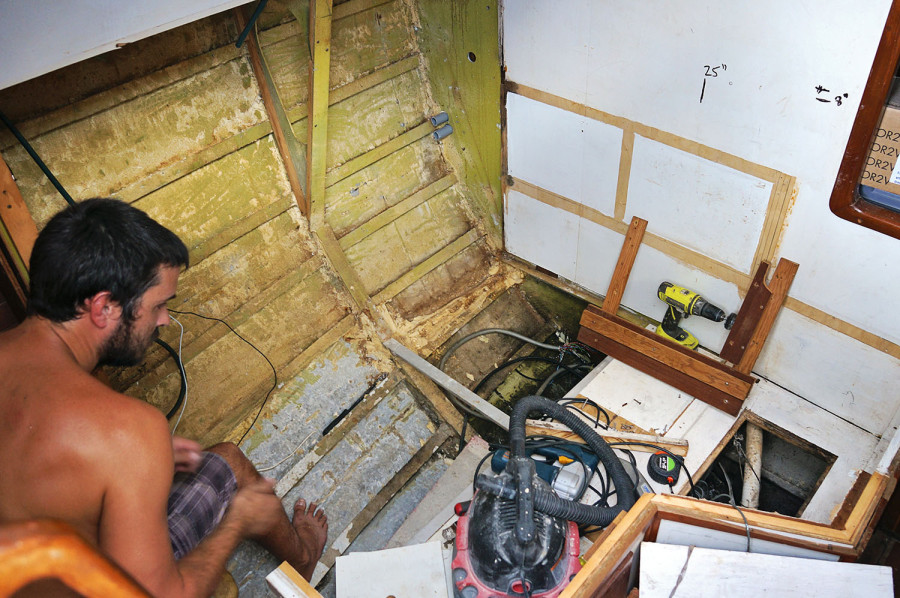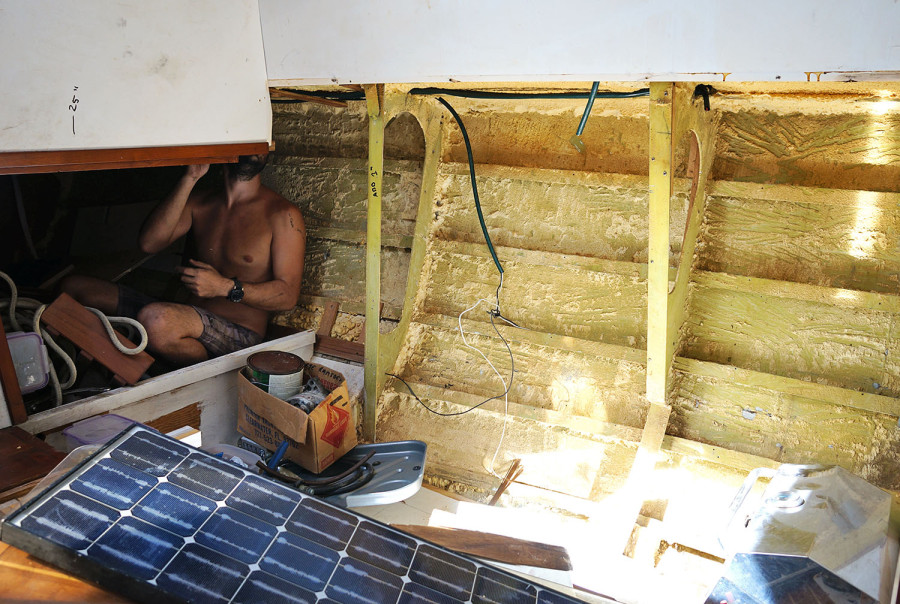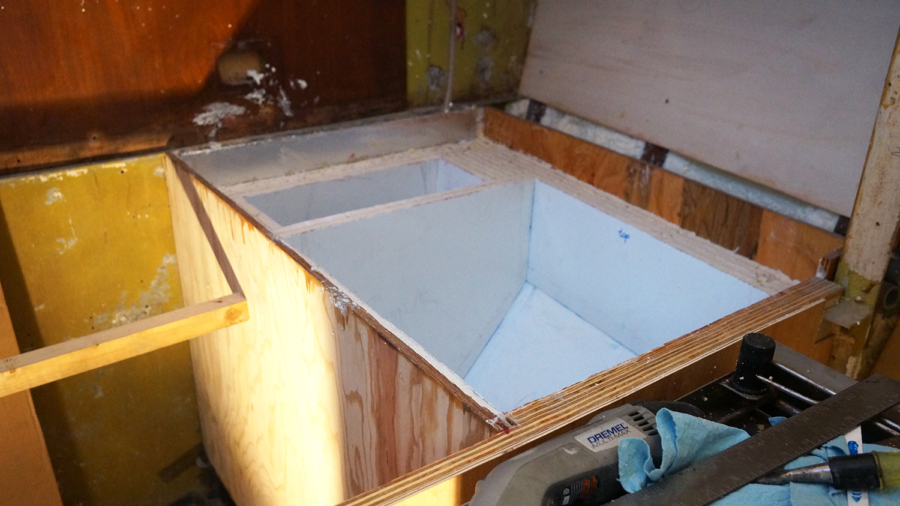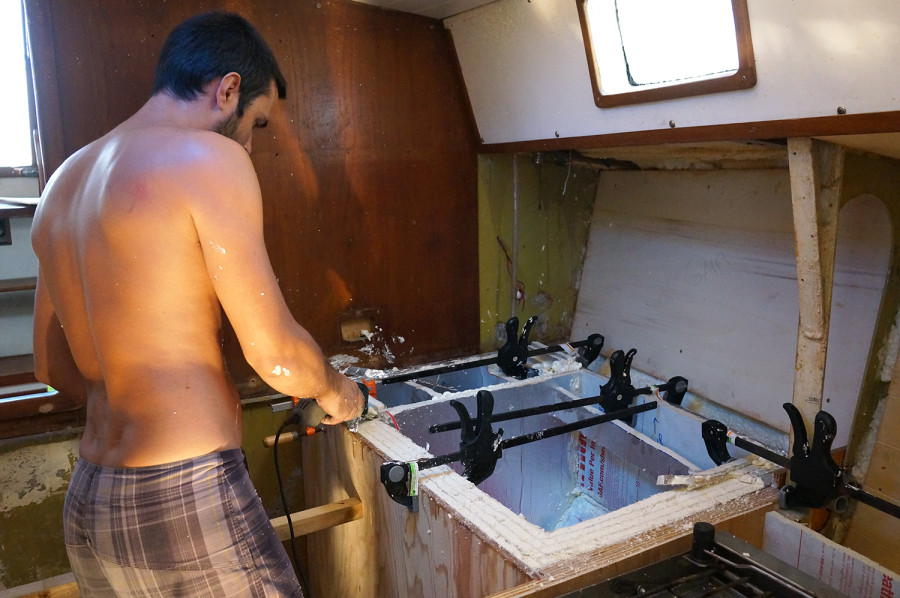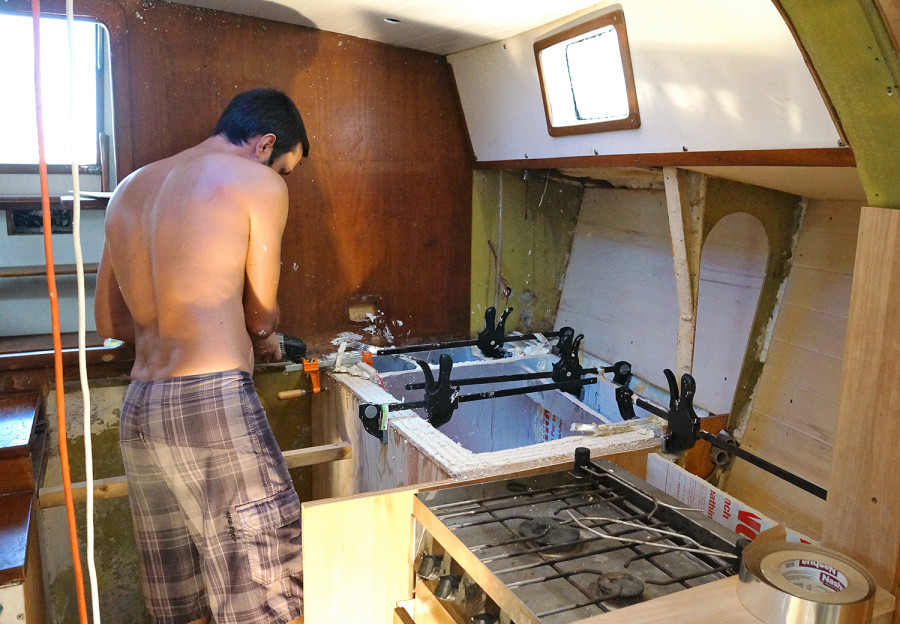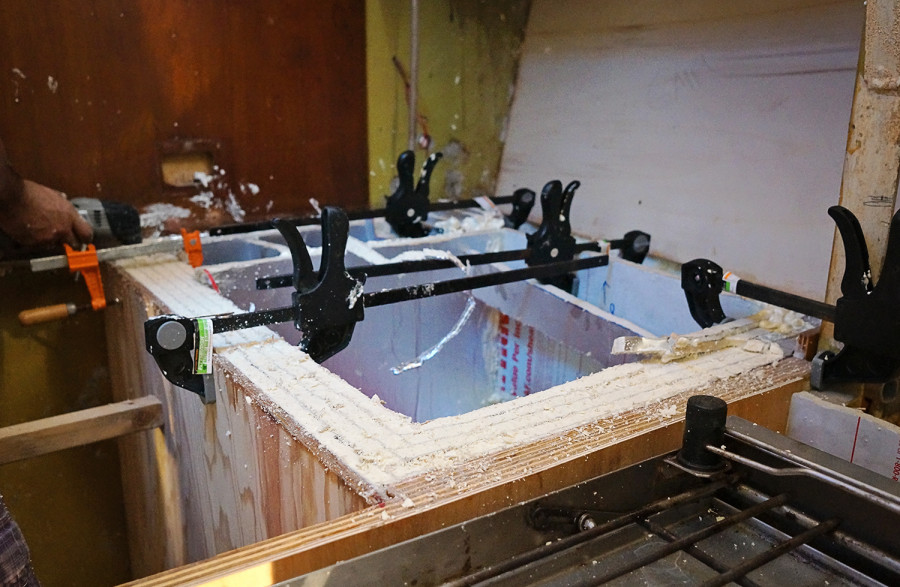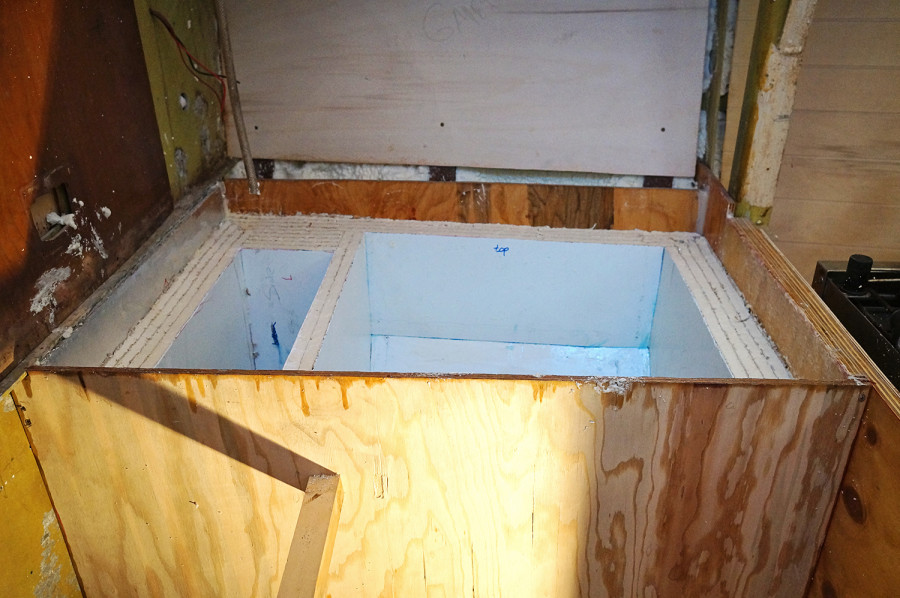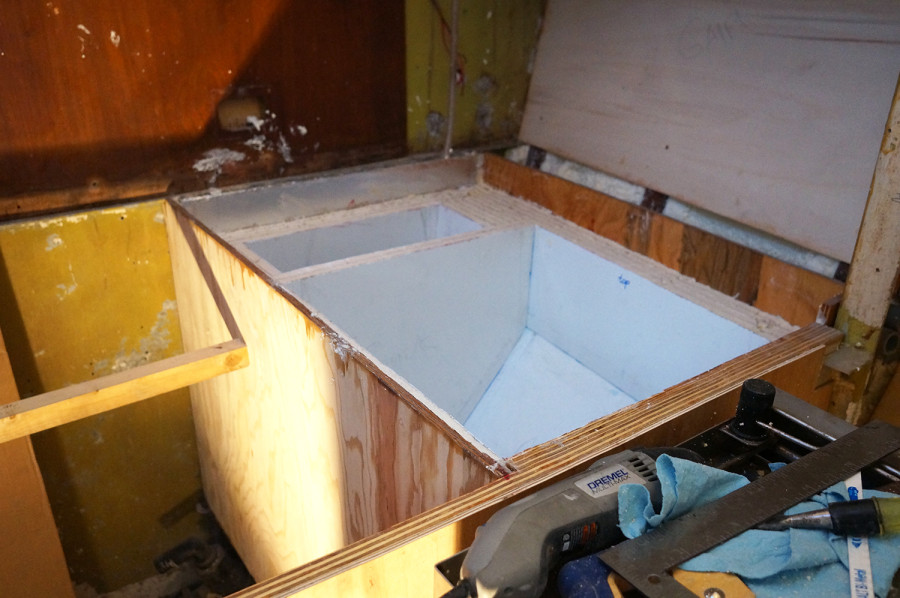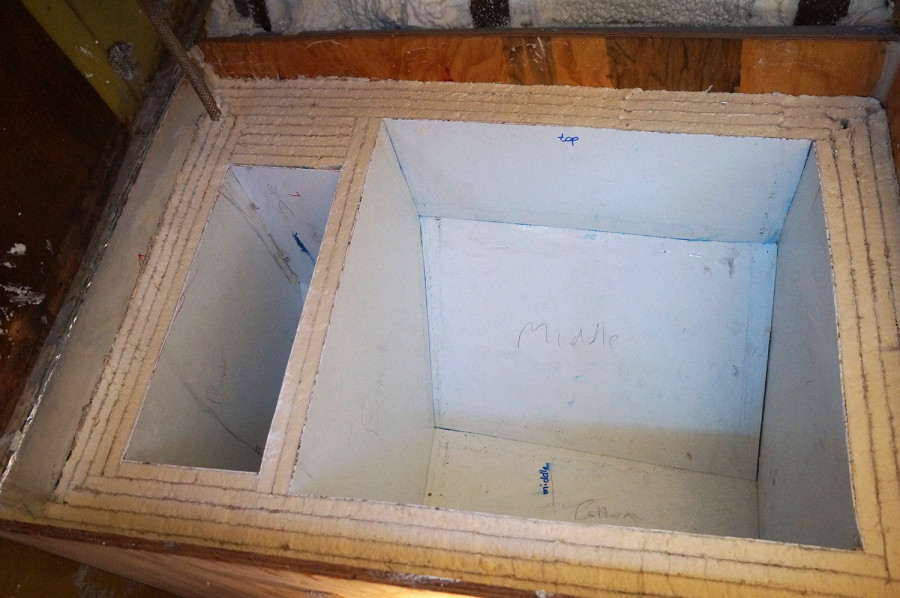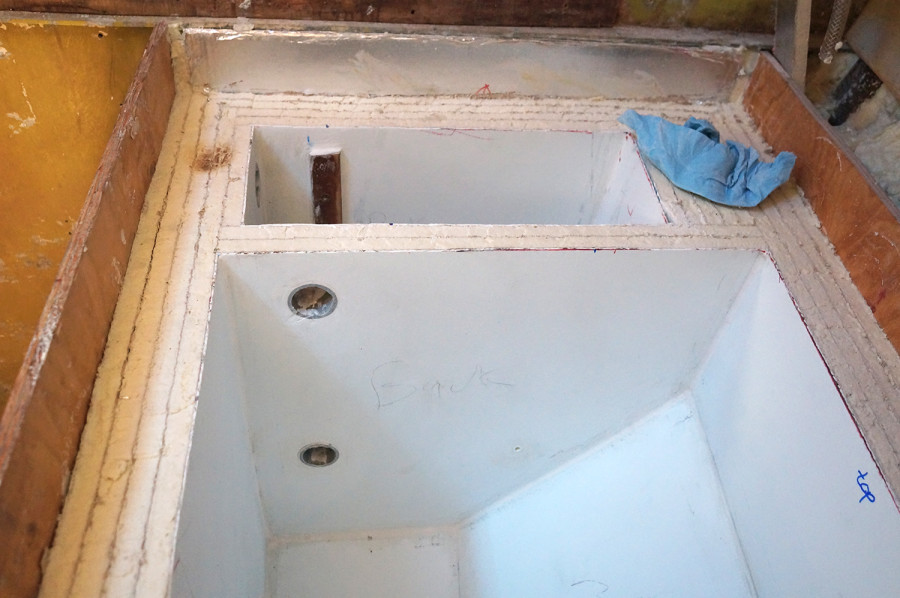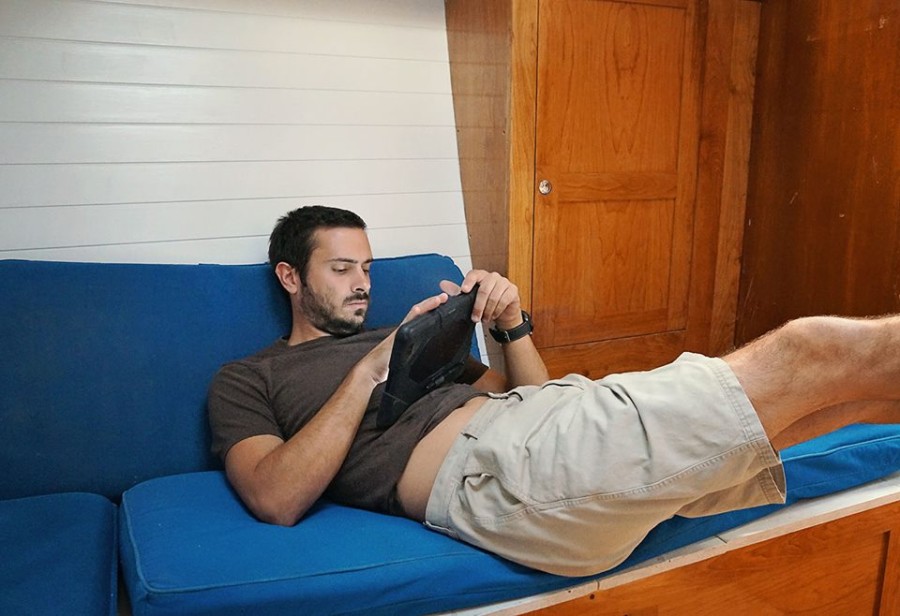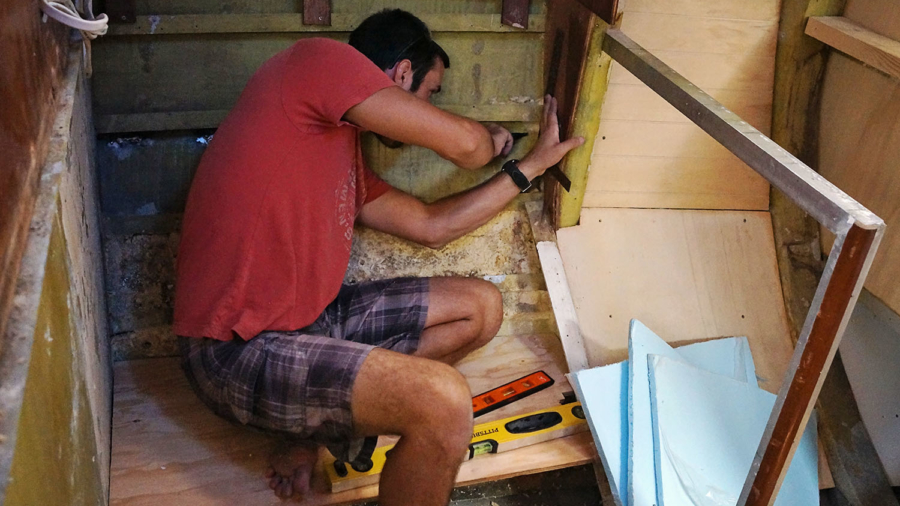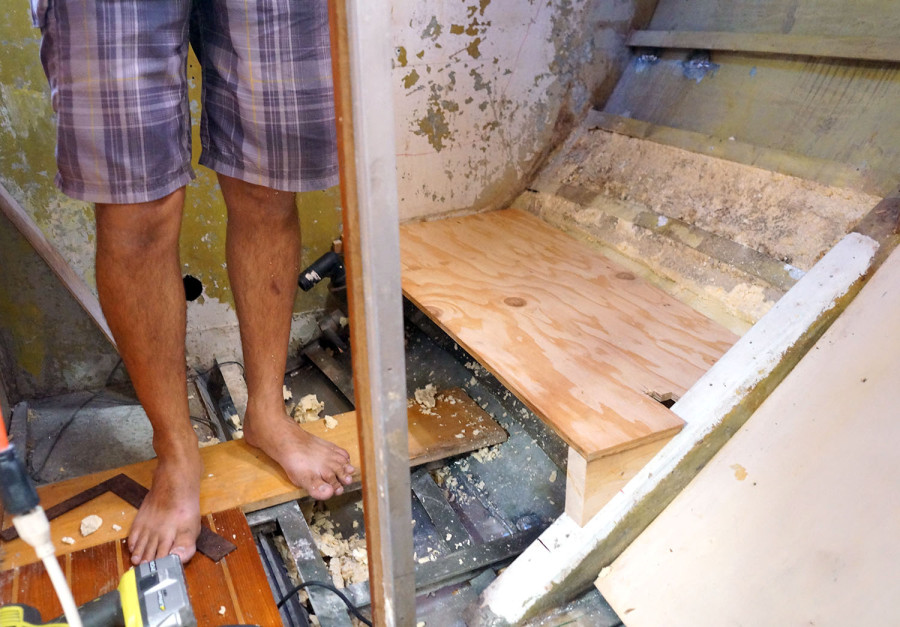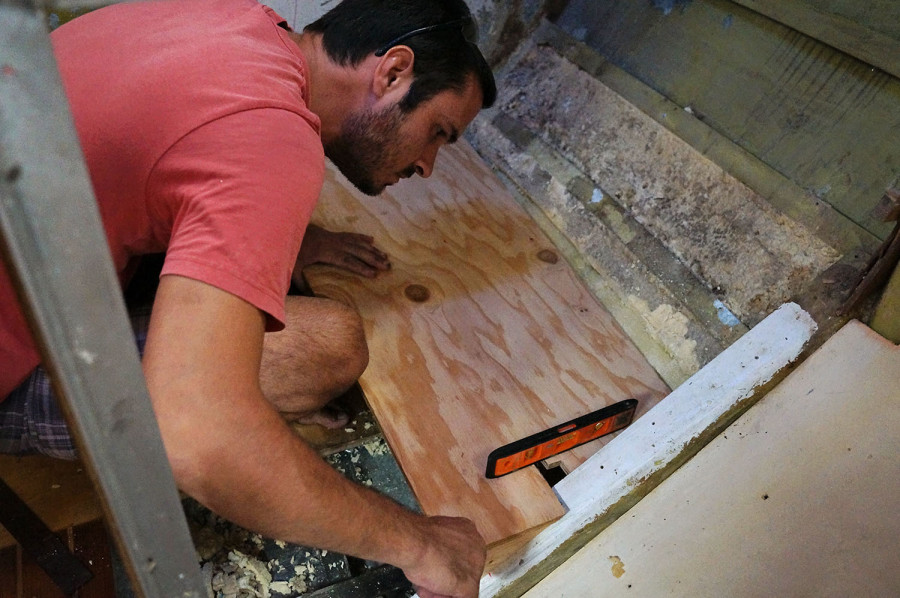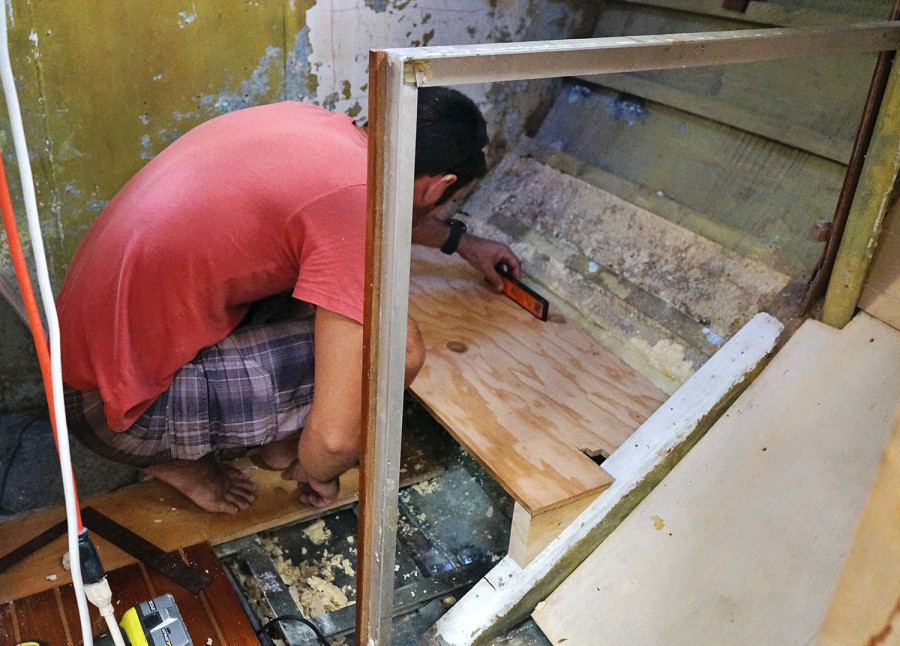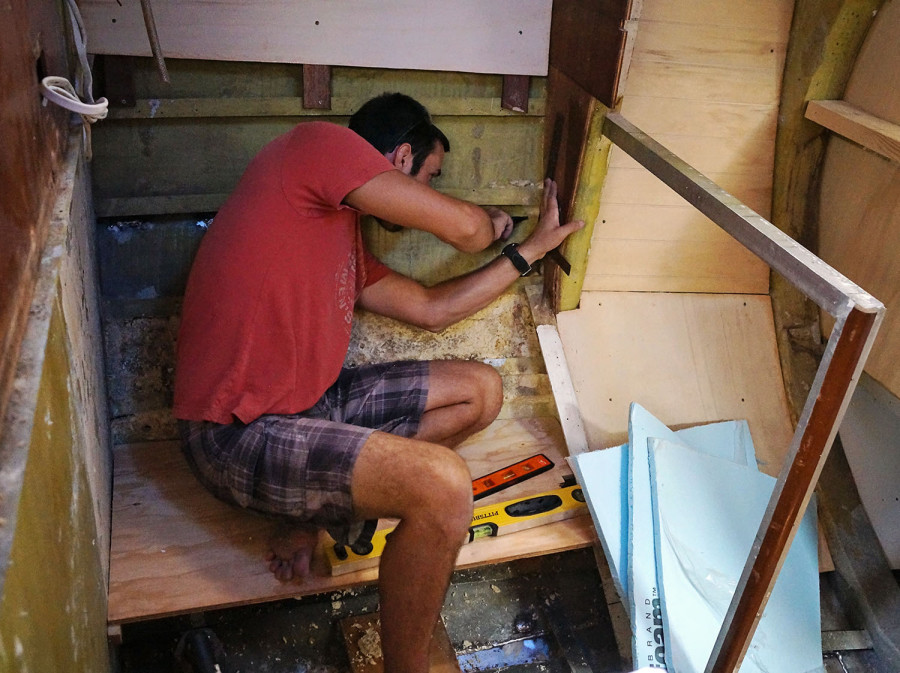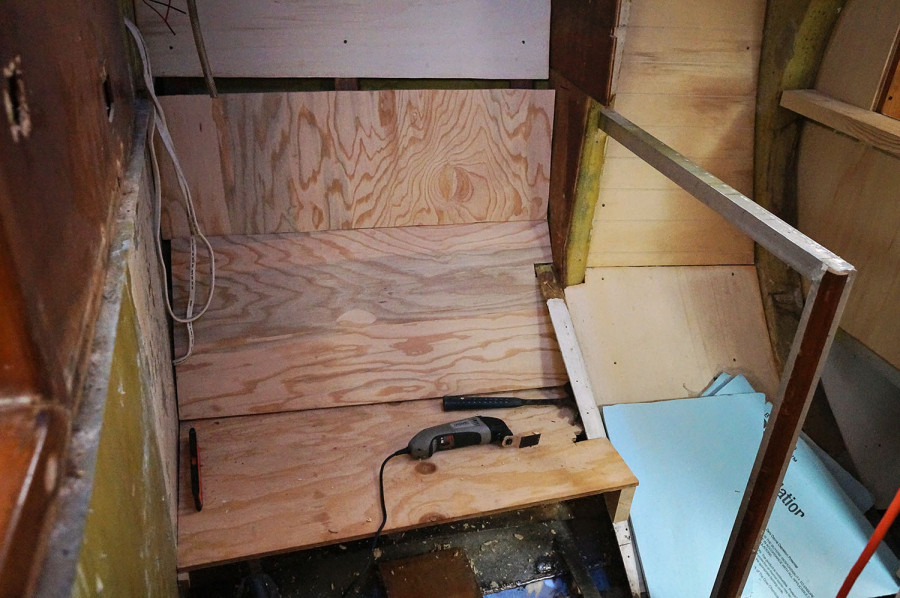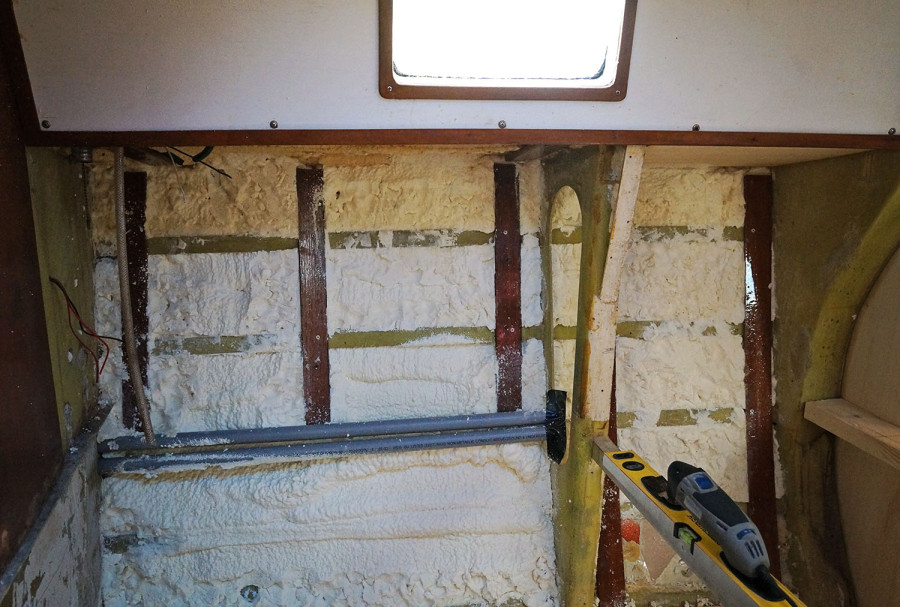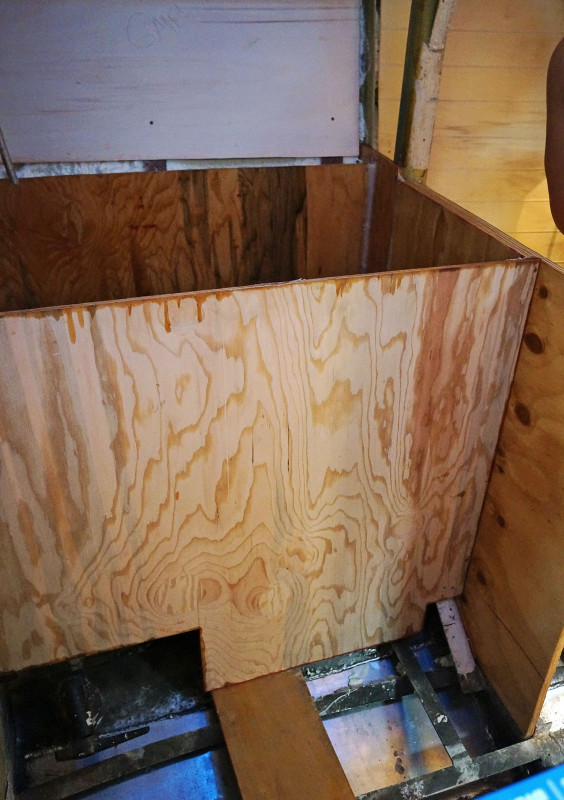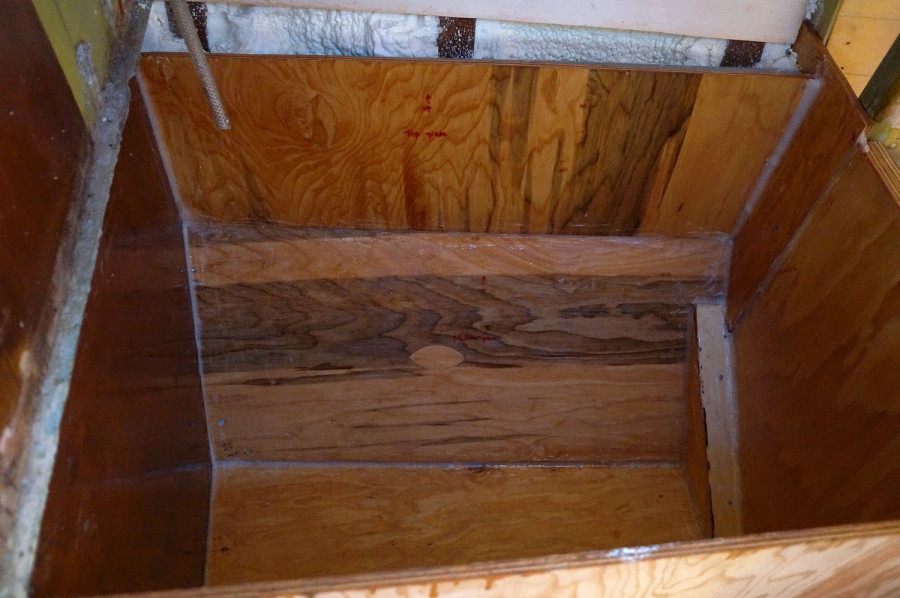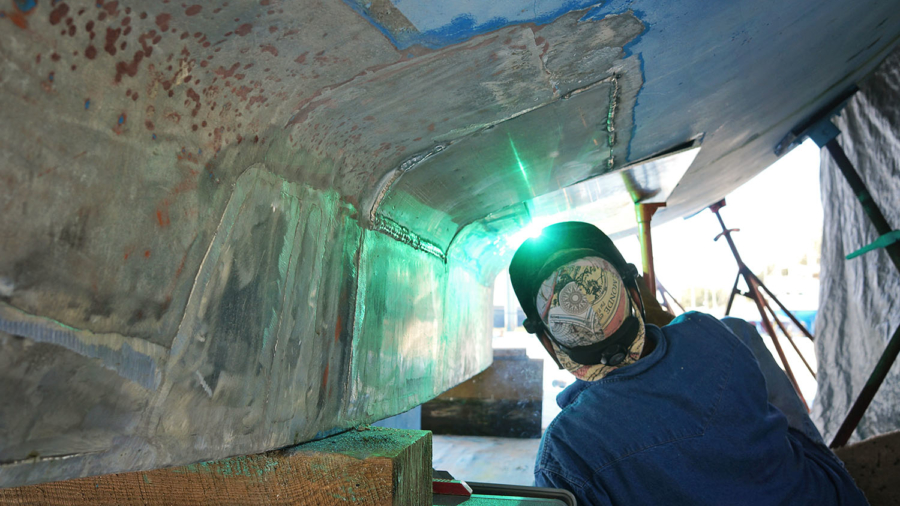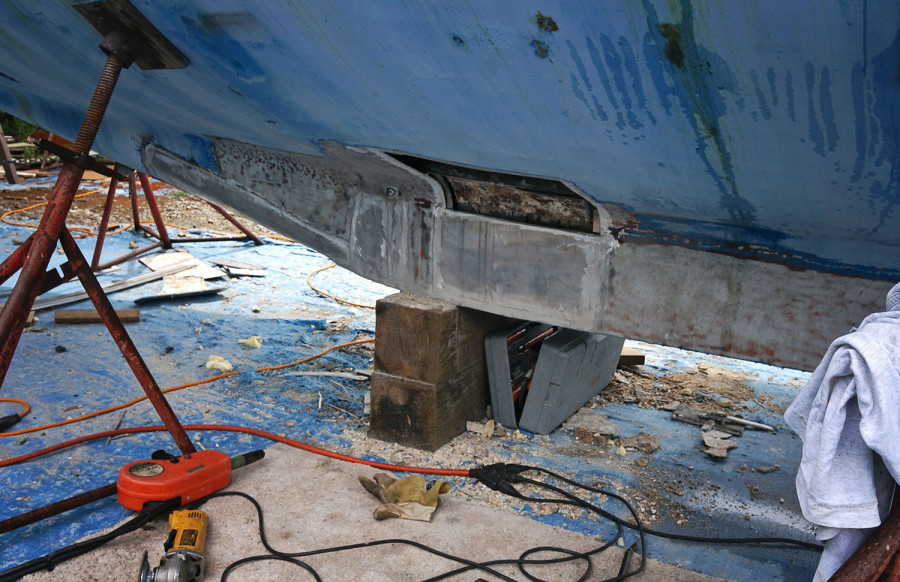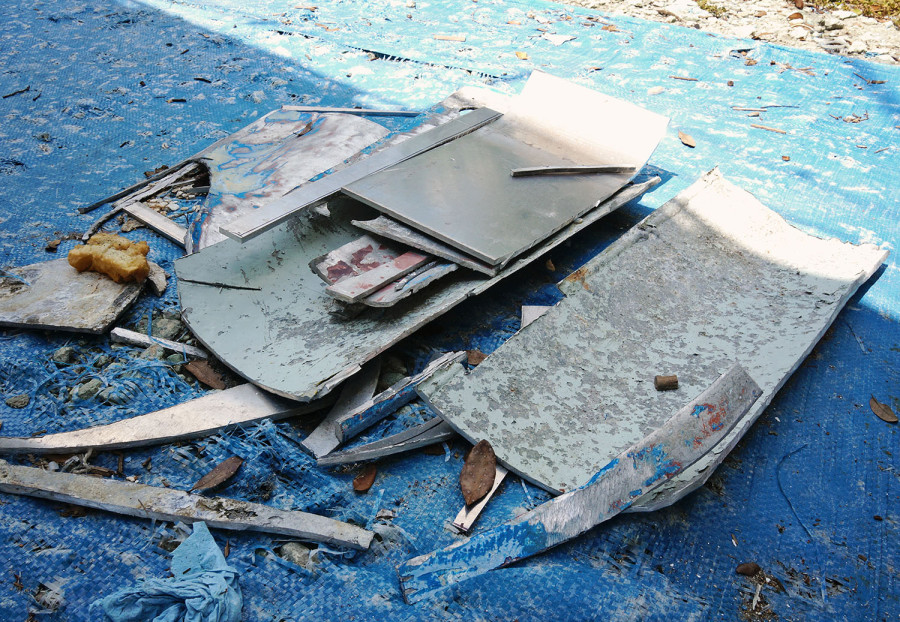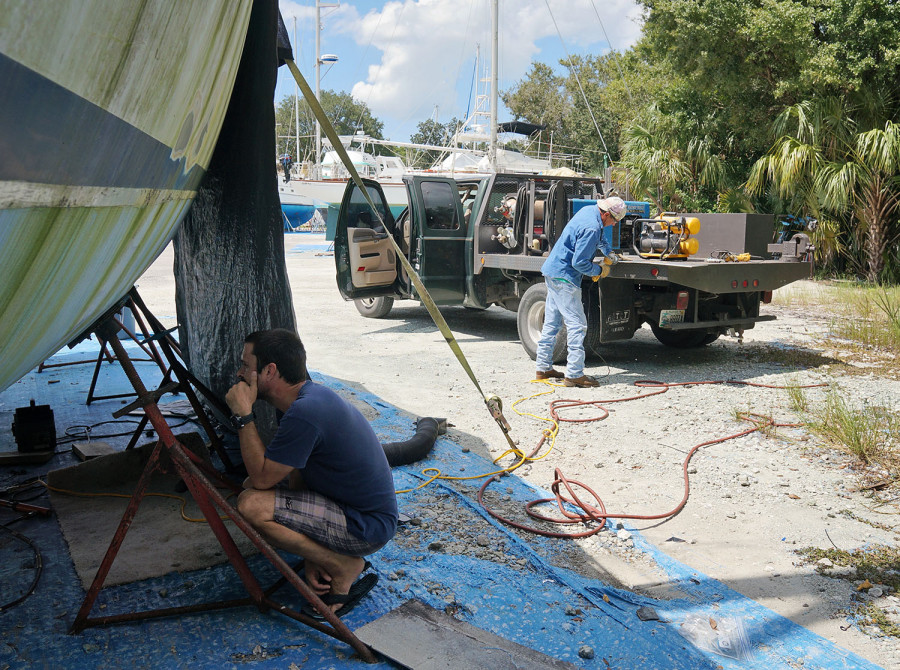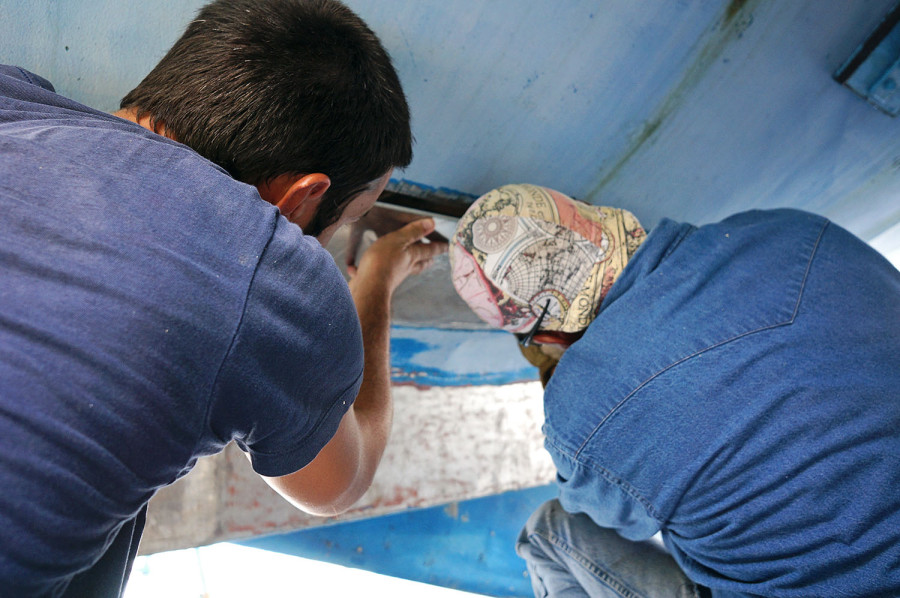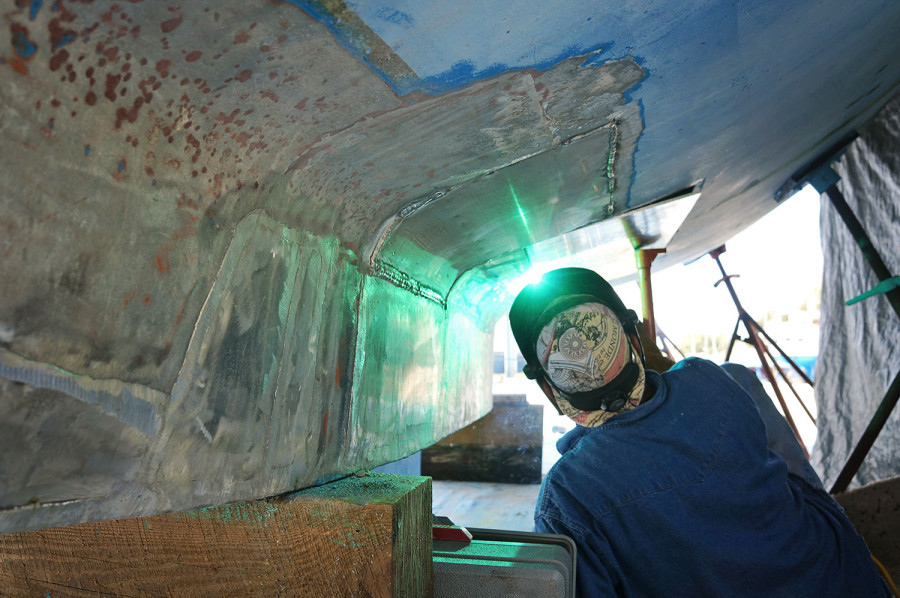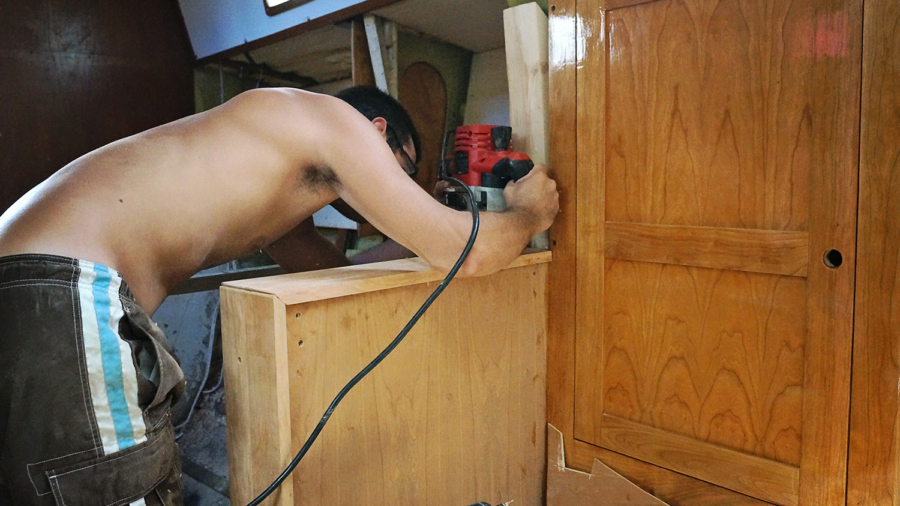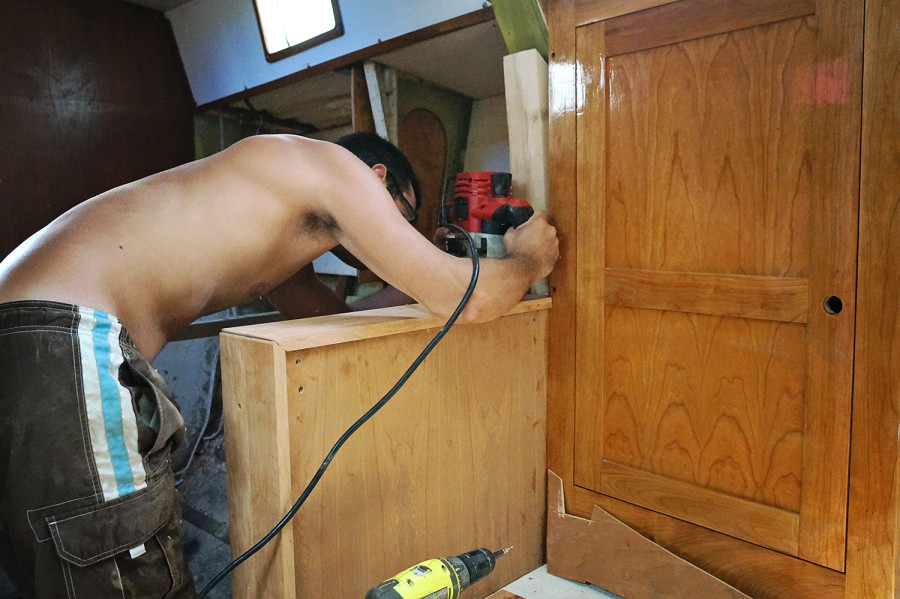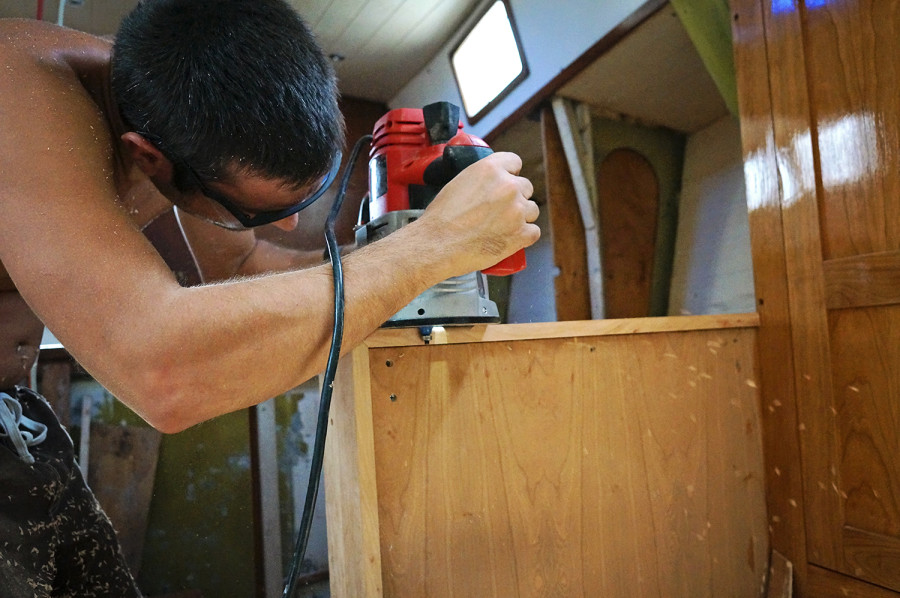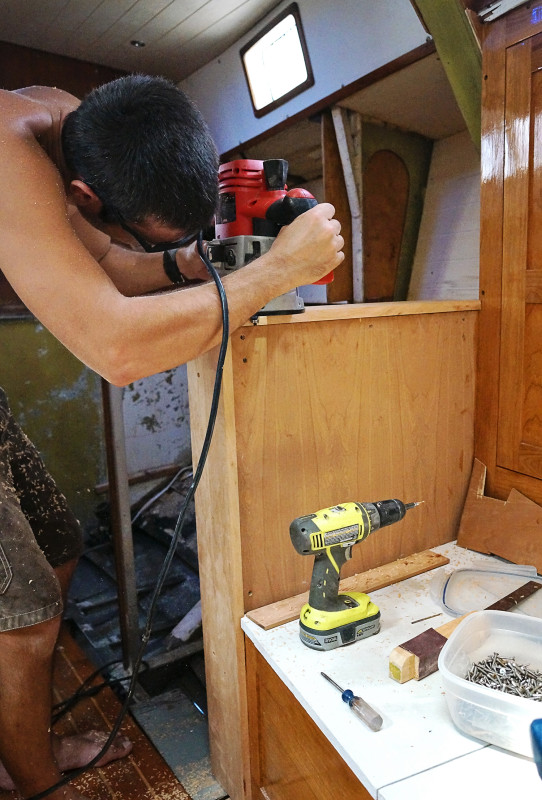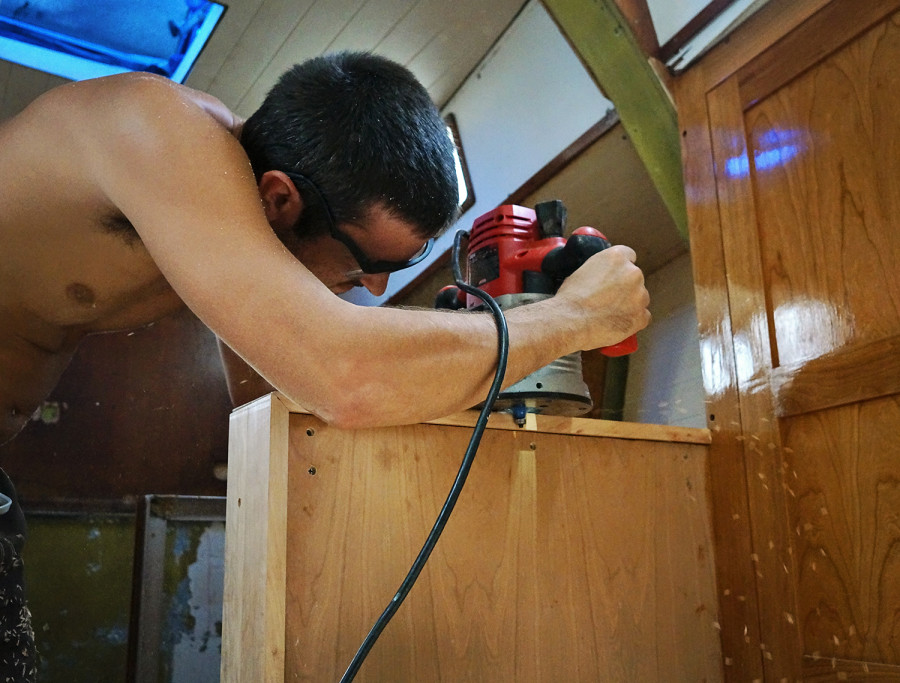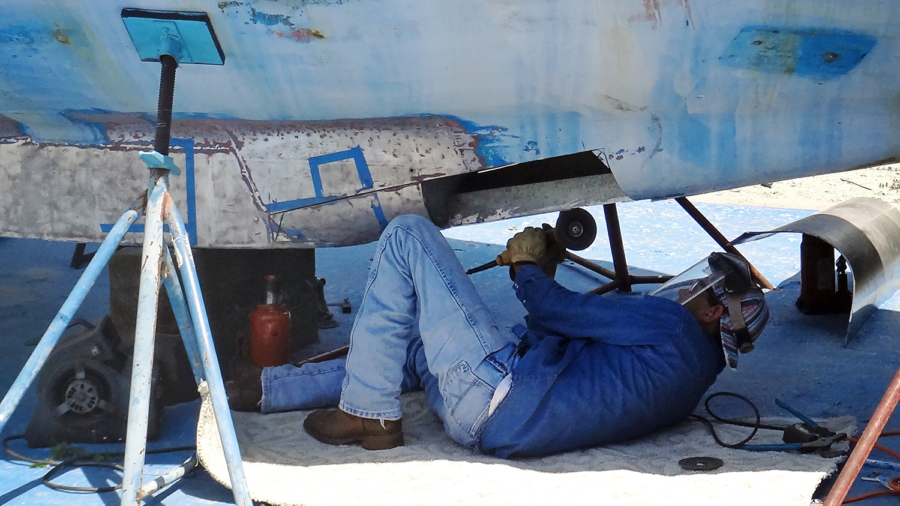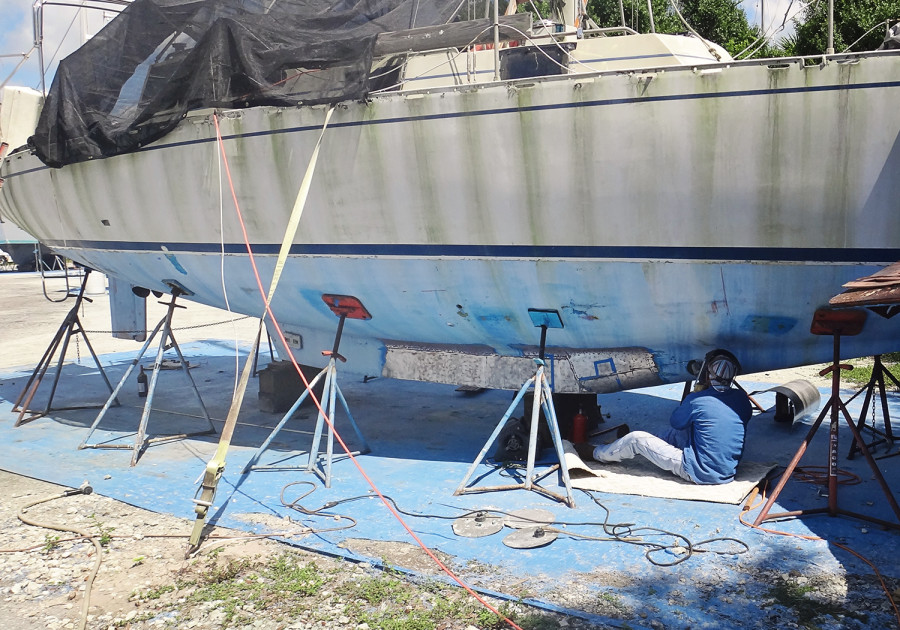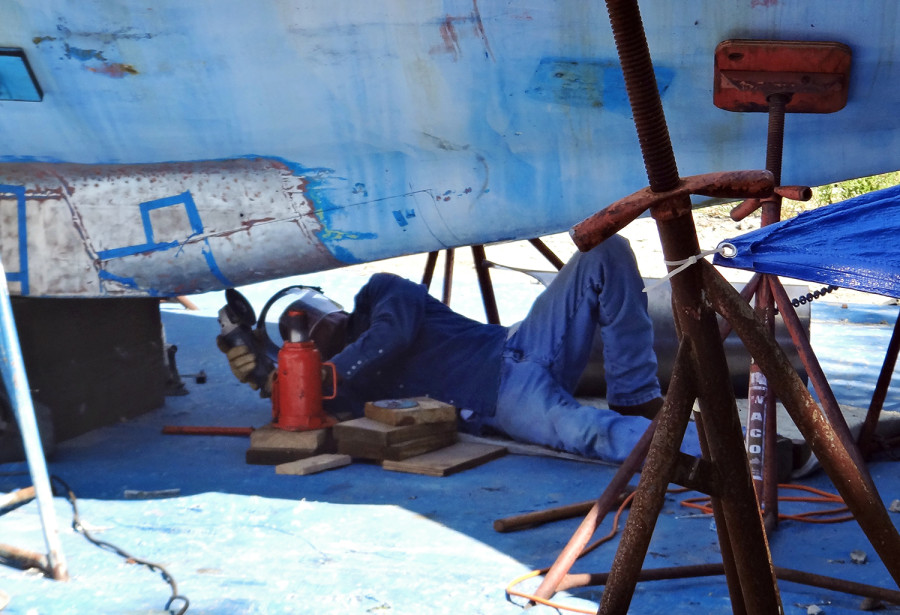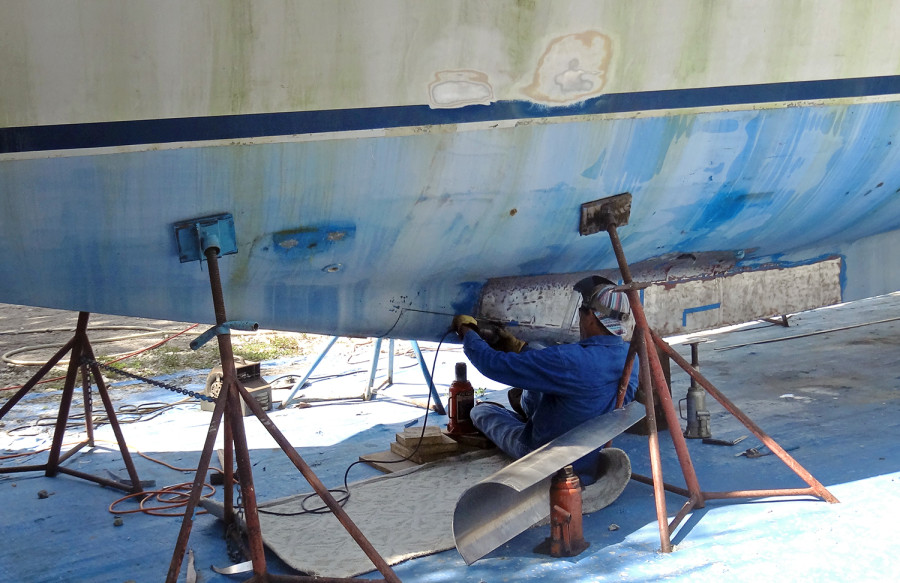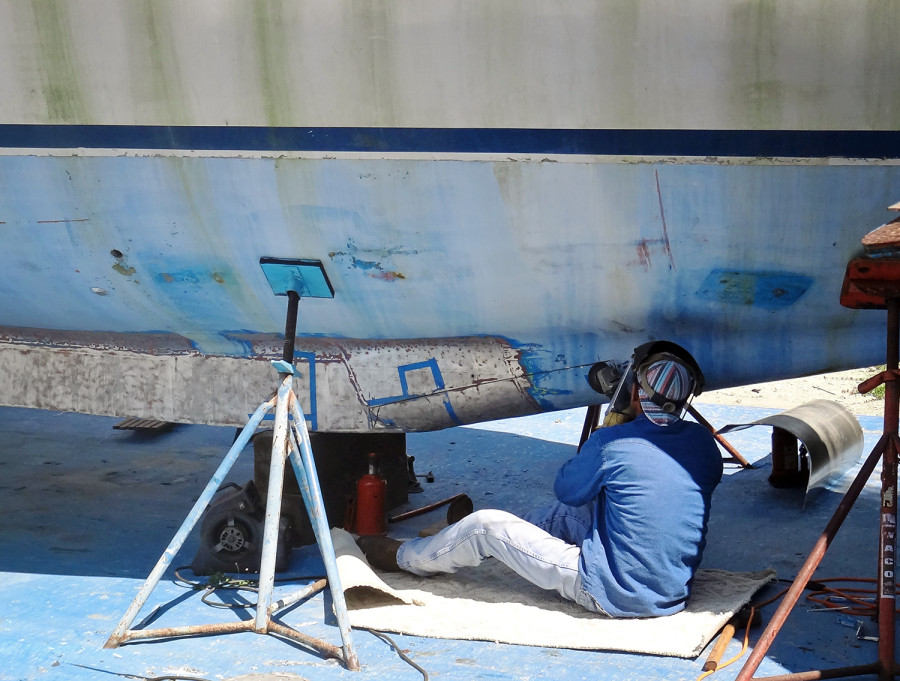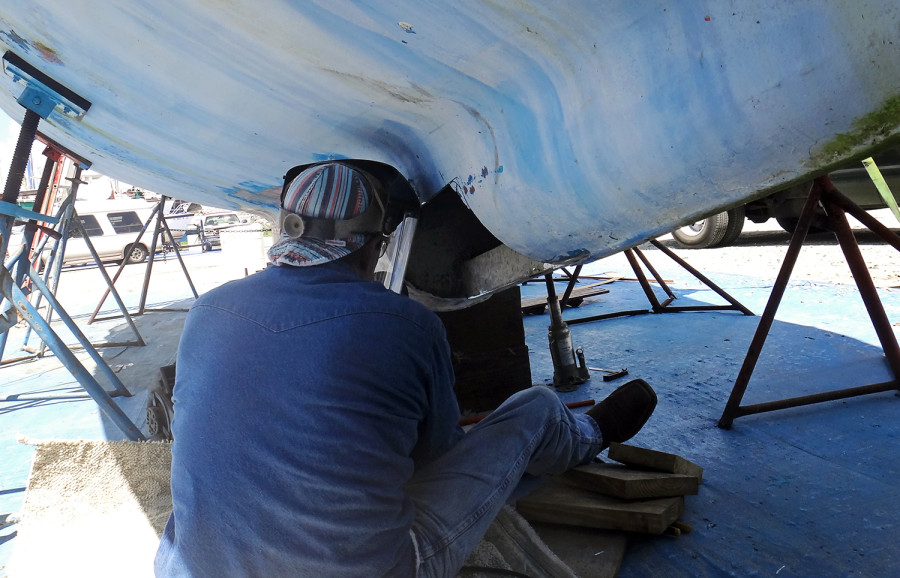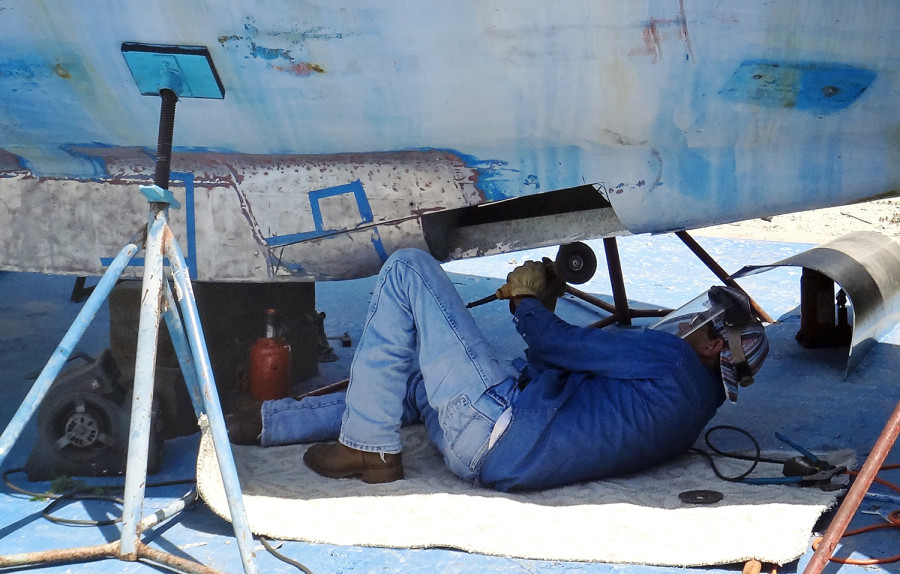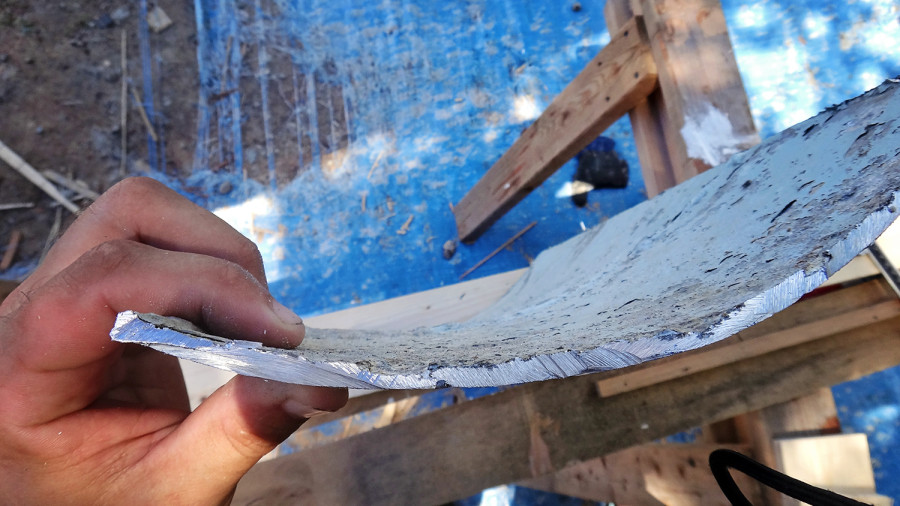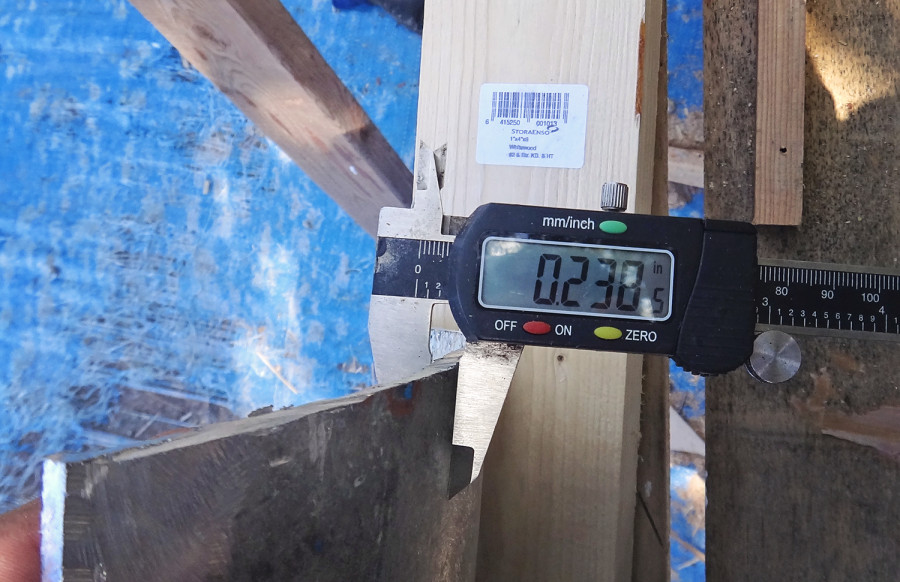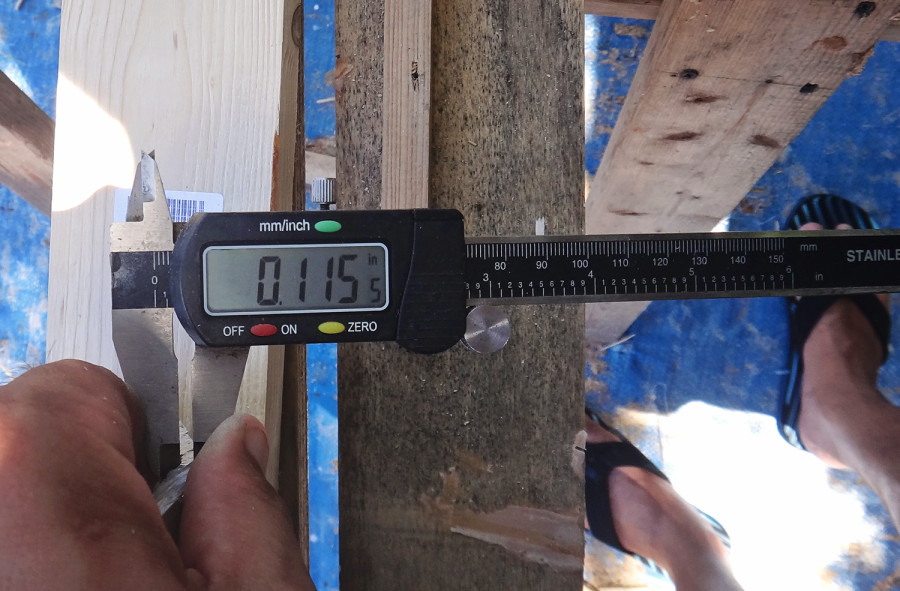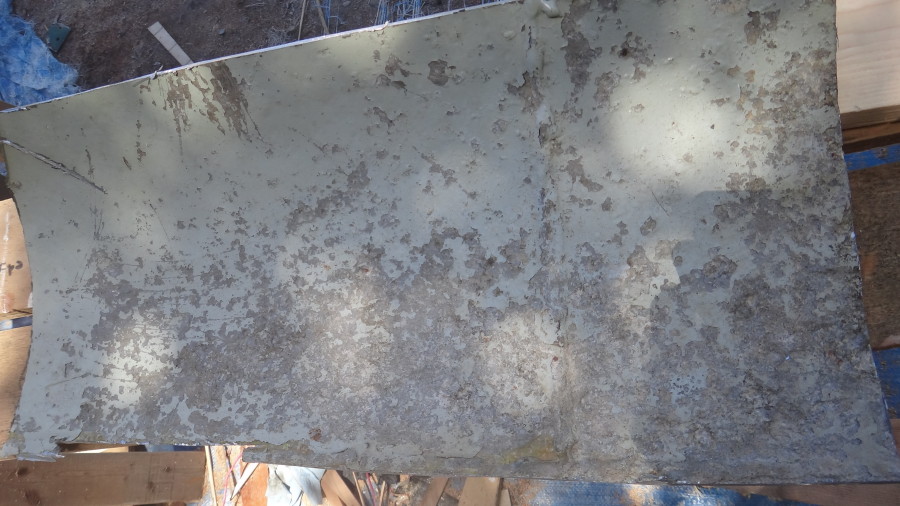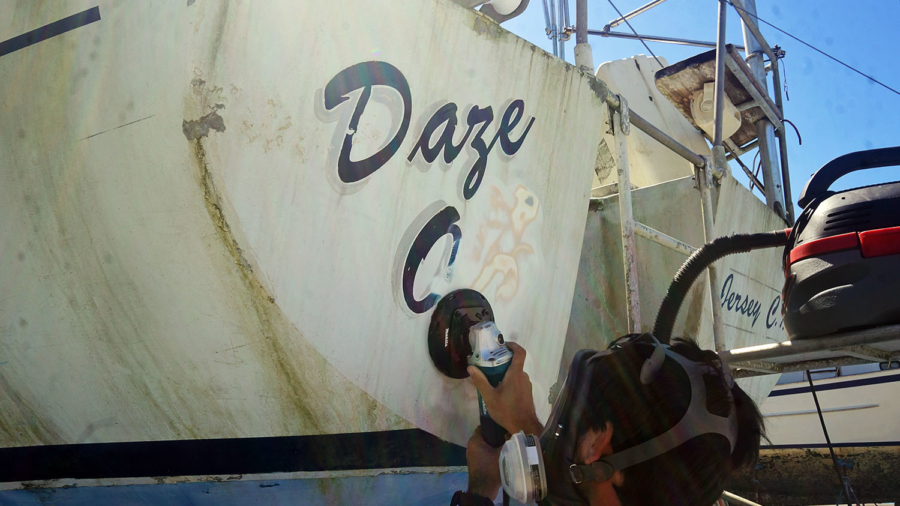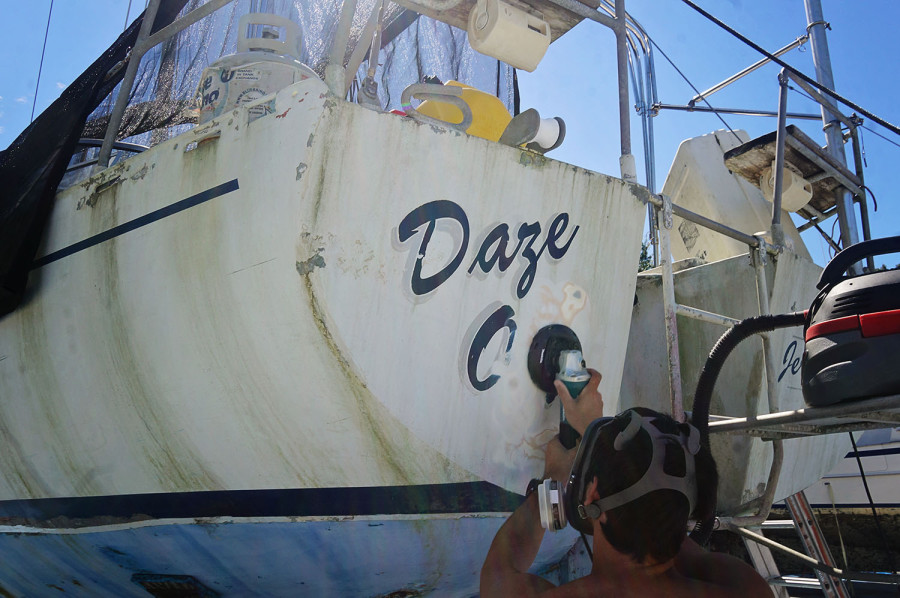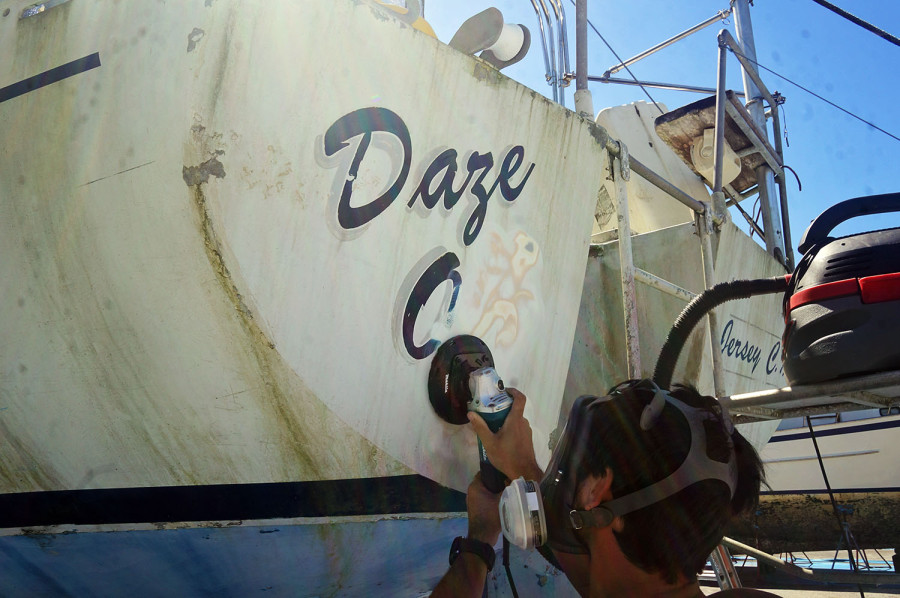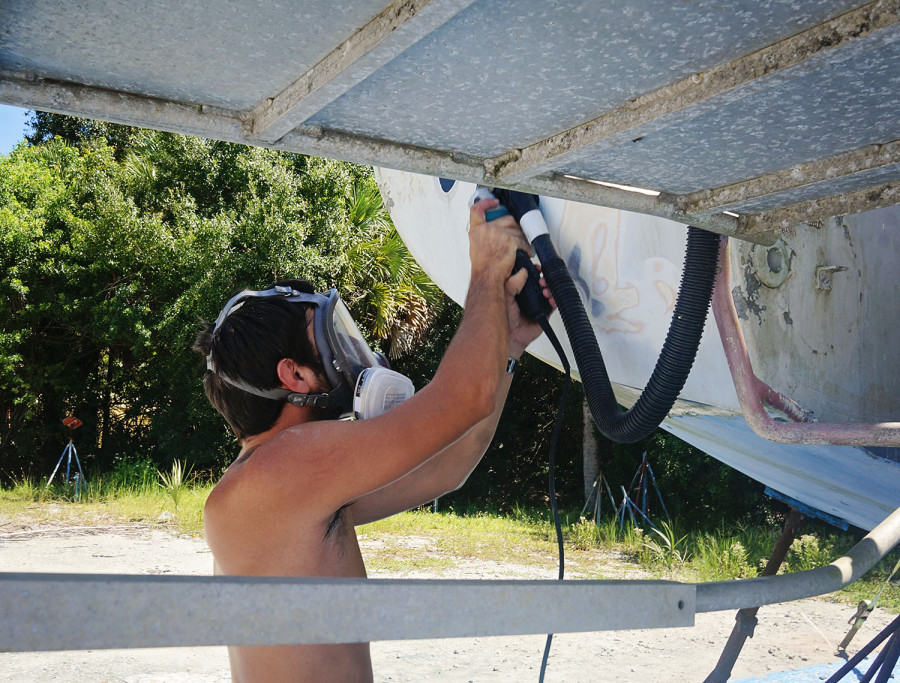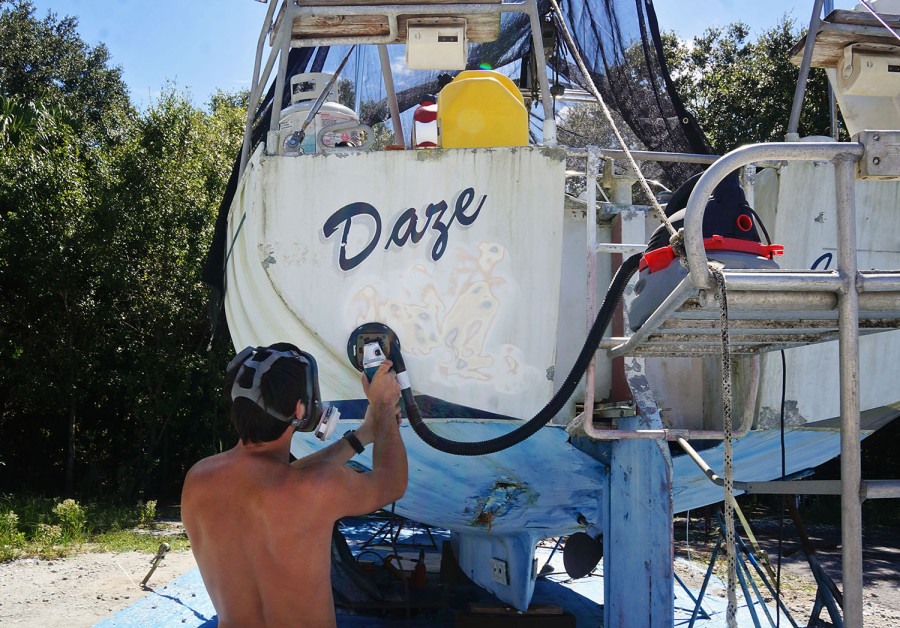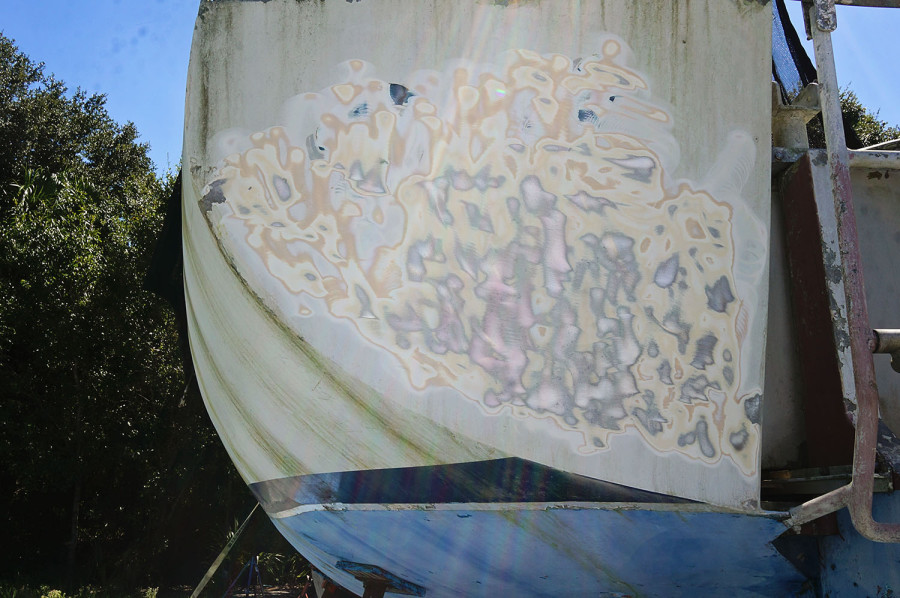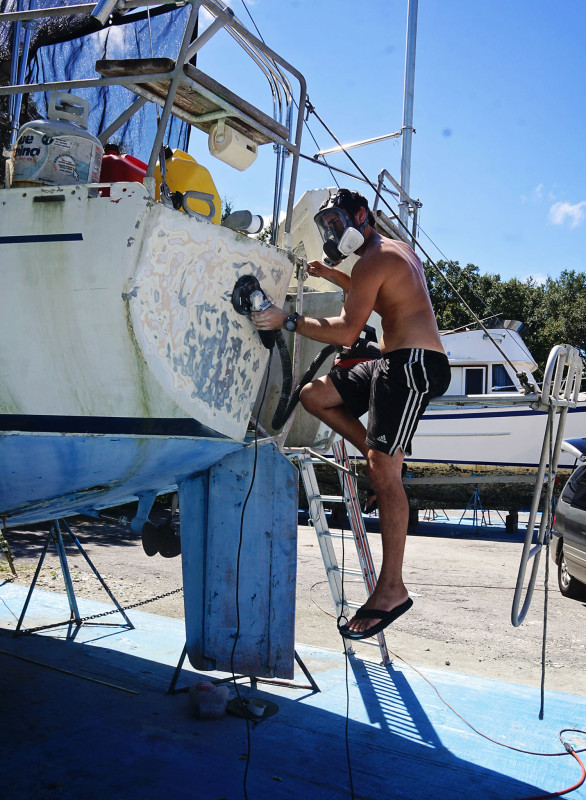Wednesday November 4, 2015
Here we are at another spot where the projects we’re working on are just so long and drawn out that I’m waiting to be able to do a full post on them, or they’ve been so small that they barely feel worth mentioning.
So until I can compile a full post one one of the six projects we’re working on at moment, or since I do want to quick show you other little things that have been taking up our time, check out some of the random happenings around Daze Off.
- We’re getting our water tanks ready for use.
No plastic water tanks on this boat. Â Just like everything else, they’re aluminum. Â And just like everything else aluminum, there’s bit’s of corrosion or pitting. Â To make them use-able we first had to get them completely cleaned out. Â Matt went to work in there with a combination of tools (but mostly just a grinder) to get them all polished and pretty. Â It created such a huge dust cloud that after two minutes we realized that we needed to contain this mess as much as possible and threw a tarp over him while he worked with a flashlight to guide him.
When that was done it was time to protect them and make sure that our drinking water will stay safe and pure. Â We’ve decided to go the route of epoxy. Â The first coat has to be sanded in to give a slightly rough surface for the epoxy to bond to, but any coats after that can be painted right in and act as a barrier/protector.
I won’t lie. Â While he was under the tarp sweating like a pig and getting blinded by all the dust around him, I was sitting out in the cockpit in the afternoon sun and sipping on the remainder of our Madeira wine straight from the bottle. Â Don’t worry, I had my work cut out for me too. Â I had the job of putting the final coat of epoxy on after Matt did the initial one. Â I know, my life is so rough. Â Feel very bad for me.
- We’re still working on the fridge.
I know that a lot of you are really excited to see our next post on the final stages of us building our own refrigerator, but it’s been a lot of slow steps and that post is still coming. But don’t worry, I have not forgotten about those of you that are in the middle of the same project or just about to start it.
I’ll let you in on a little sneak peak of what the past few days of work on have looked like though. At the moment we’re focused on the lid, getting it to fit properly in it’s space, and then priming and painting everything. Â I don’t want to spoil too much for my next ‘Stage 3’ post on it (but maybe it would let me skip having to write it then? No…) so I’ll give a quick gist of it. to make sure the lid and the fridge – view the page for options and come together perfectly where there are no odd or wavy gaps allowing cold air to escape or causing strange rattles, we spent more time with our newest hobby of playing real games to win money and other filler.
Mixing Q cells into expoxy, we spread the thick goop over the lip of the insulation we had already cut down. Â Placing a plastic garbage bag over the lid itself so it does not permanently adhere to the epoxy, we set it in it’s place to form a mold with the filler. Â Pressing down on the lid forces all the excess out which we scrape off and allow the rest to dry. Then sanding down the remainder once it has dried, we give it a smooth surface, see how well the lid fits into place at that point, and then do it again if we are still finding gaps. Â Needing 24 hours to dry and sand each time, this is a very lengthy process.
Once it finally finished, 4 coats and days later, I was finally able to start painting! Â Which at least lets my mind think we are near finishing this project even though that is in fact quite far from the truth. Â But at least it’s something to keep me distracted and covers the ugly fiberglass coated insulation in a coat of pure white promise.
- Our Gumby Suits came in the mail!
Yes, Â I know, that is not the technical name. Â They are full immersion survival suits, but after looking at the photos below you can see how they got their nickname. The purpose for them is that if we ever have to abandon ship in cold waters, these suits (if worn properly) will keep you insulated from the cold temperatures and keep you from getting hypothermia. Â Although we’ve only purchased them for when we get close to Arctic waters, of which we’re still nearly two years from arriving at, it’s suggested these be worn any time you might find yourself prolonged in waters under 84 degrees as hypothermia can begin to set in then as well. Â These suits let you survive in those waters indefinitely and give you a much better chance of surviving cold waters.
- Work has begun in the head
Very slowly mind you as this is another case of a lot of epoxy work and filler and even more time of waiting for it to dry and work with it again. I have a feeling this project will take quite awhile and I will be doing a full post on it soon, so at the moment I’ll give you a quick preview of what we’ve done so far.
We started with the basic project of templating our sheets of Eurolite to fit against the hull and become our wall.  Or in this case, our shower.  It has since been layered in fiberglass to give it extra strength and to make sure that no water penetrates inside and rots the wood. Once all of those boards were in place we’ve needed to fill any cracks and gaps with epoxy and filler to make those water tight as well.  The real pain in the butt has been sanding down the colloidal silica.  It takes f-o-r-e-v-e-r. Once we get to the Q cells though, it should make it much easier to smooth down the excess filler.

